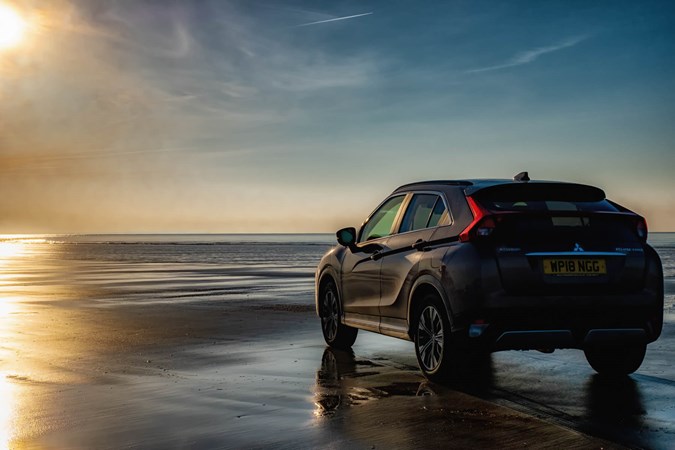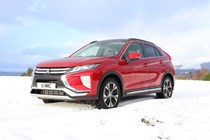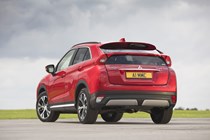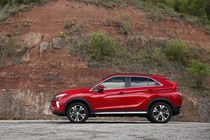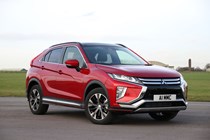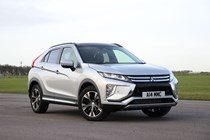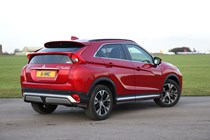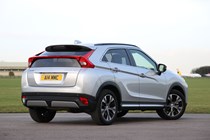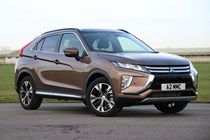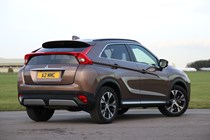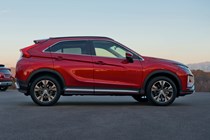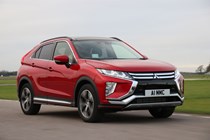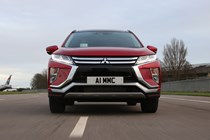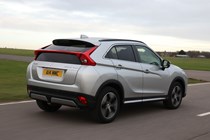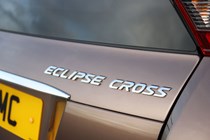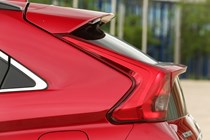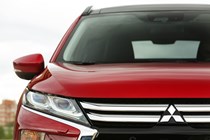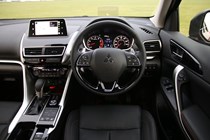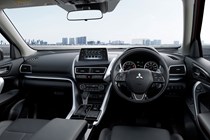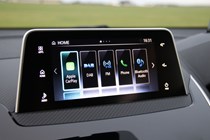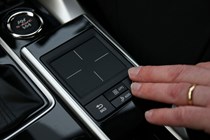
Mitsubishi Eclipse Cross SUV (2017-2021) long-term test
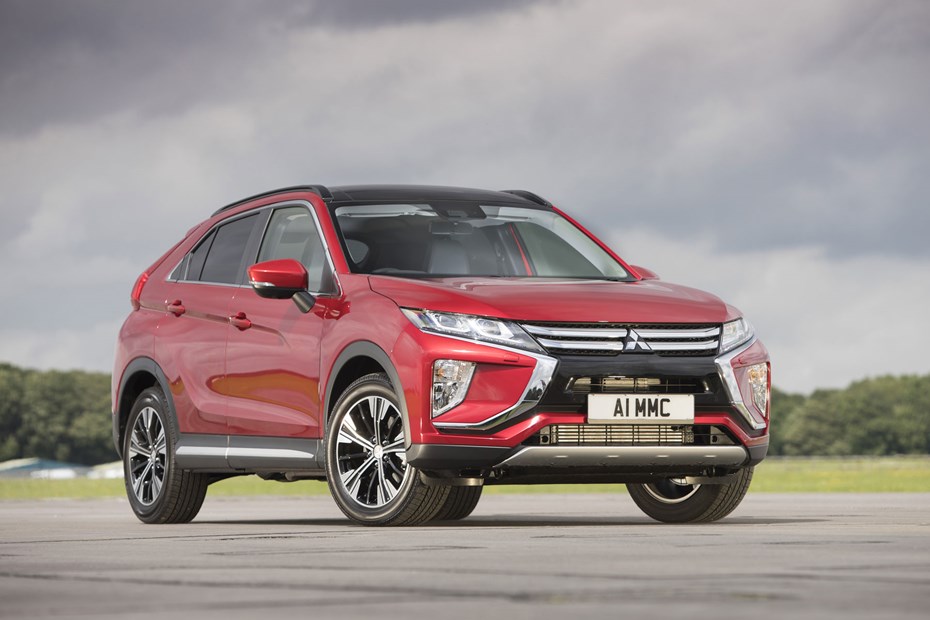
Living with the Mitsubishi Eclipse Cross
Crossovers are the trendiest and fastest-growing sector – but I’ve had little experience of them. My tastes have been very focused on ‘sporty’ or ‘practical’, rather than trying to blend the two… Mitsubishi probably aren’t on your shortlist. though, and most people associate the name Eclipse with Brian’s neon-green coupé from The Fast and the Furious.
Rather than a dainty but rapid coupe, the Mitsubishi Eclipse Cross is yet another crossover candidate for families’ hard-earned cash, offering high specification and all-wheel drive for a very compelling price. Taking some credibility from Mitsubishi’s highly capable 4x4s (Shogun, L200 pickup and Outlander) should help with appeal for 4x4 fans, even if the majority of buyers choose front-wheel drive for this class of car. Some intriguing intersections of design help it stand out from the crowd in this popular sector, recalling French and American styles.
Our car has an automatic transmission and all-wheel drive, though a manual is offered as well as two-wheel drive. There’s only one engine though. regardless of transmission. A 1.5-litre turbocharged four-cylinder unit, producing 163hp and 250Nm torque.These days small displacement, high efficiency petrol engines are commonplace. Did I mention Mitsubishi are known for pioneering technology? They’ve been here before, with the Colt CZT; in Ralliart form its 1.5-litre turbo produced 180hp in 2008 – and that was a much older engine design.
We’ve gone for the top of the range Eclipse Cross 4, though, with a list price of £28,165, plus metallic paint at £540. It features leather seats, upgraded Rockford Fosgate audio, a panoramic sunroof, and adaptive cruise control.
Over six months, and 14,000 miles, we put the Eclipse Cross through some serious real-world testing. It returned over 34mpg – on fast commutes, in heavy traffic and country roads too. It generally got 90% of the claimed (pre-WLTP) economy – It’s not marketed as an eco car particularly, and that’s okay – buyers can manage their expectations. Unlike those that claim impressive figures while only returning 60% of those claimed in the real world, Mitsubishi seems to have got its numbers right.
Update 2: Any Colour You Like
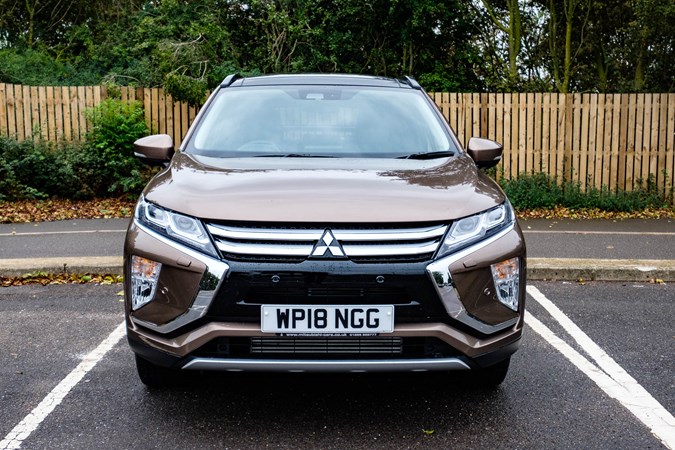
Tthe Eclipse Cross is far from anonymous. It isn’t Juke-esque cartoony and exaggerated, or cute like the Kia Sportage. It’s not perfect – odd propotions lose the initial aggression of the front and tapering windows..
Nice details surround the Mitsubishi ‘Dynamic Shield’ motif, like DRLs that resemble delicate icicles. Single LED projector lenses are visually balanced with a dummy lens in the headlight, and the usefully large door mirrors echo the front wheel arches. There are more design easter eggs tucked away, too – like tail lights that not only form a near-continuous line of light, they also hides a spoiler resembling the Lancer Evo X wing.
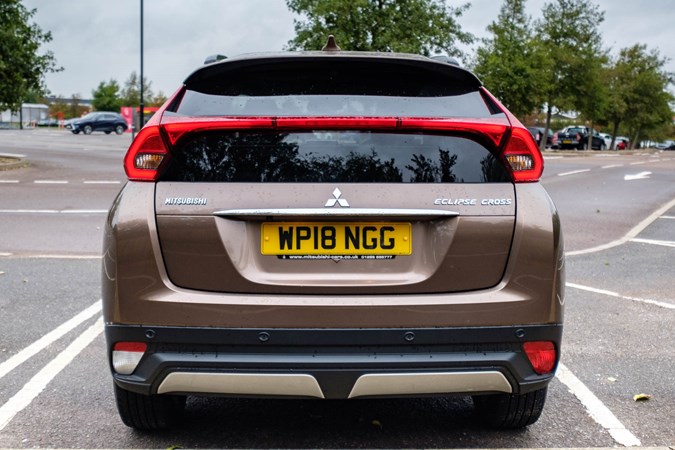
Update 3: Empty Spaces
Your view starts with a curved line that brings the door trims and sides of the car up to the windscreen, and a relatively unfussy symmetrical dashboard topped by a surprisingly small-looking 7.0-inch touchscreen.
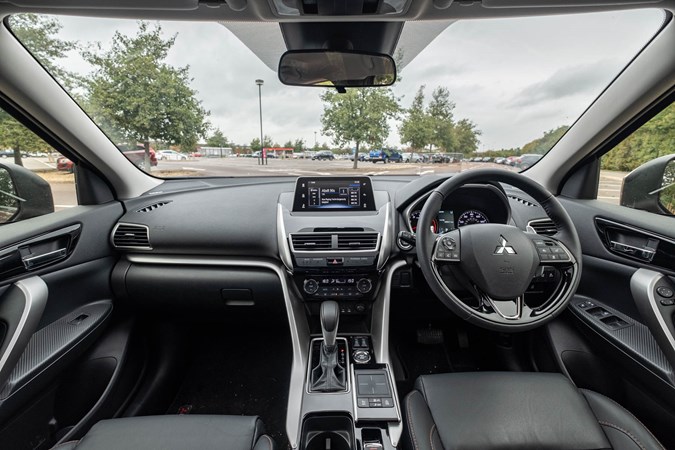
Functional materials dominate – even on the range-topping Eclipse Cross 4. It’s extremely easy to live with and use, with the possible exception of the driver aid buttons clustered by the driver’s right knee.
You have to reach overhead to open the back sunroof blind, though, and there’s nowhere sensible to store a smartphone without trailing cables – frustrating, given it’s required to really make Mitsubishi’s SDA infotainment useful. Why the USB port isn’t in the centre cubby is baffling.
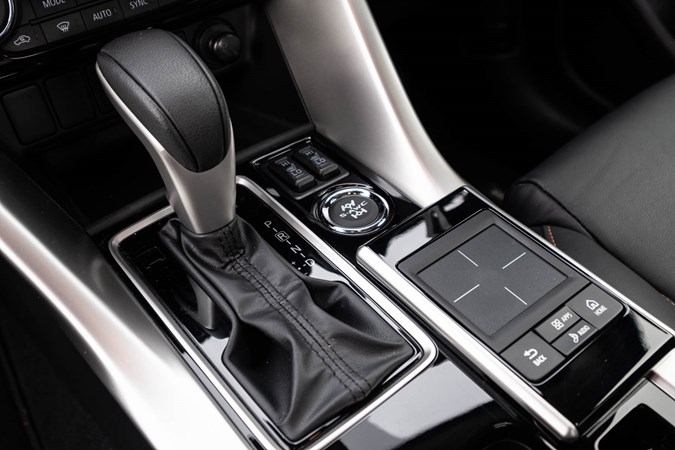
The Eclipse Cross 4 comes with a head up display that hides under a motorised cover – it’s very effective.
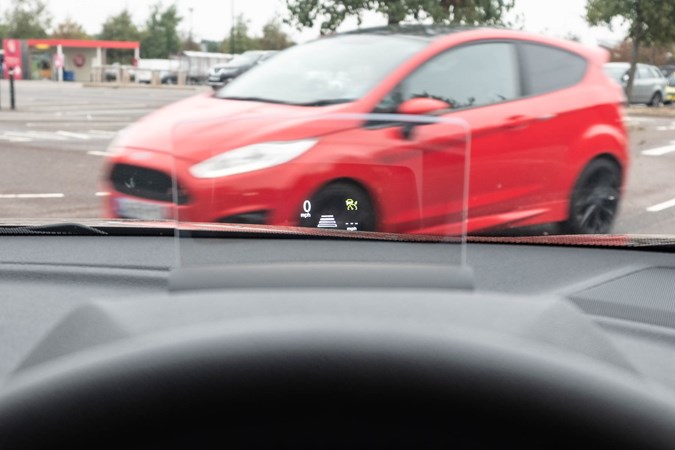
Leather-trimmed seats with orange stitching are reminiscent of the L200 SVP II, and are pretty comfortable. Up front there’s plenty of room and reasonable adjustment for the driver, though the seats are fairly flat and simple overall.
It gets more interesting in the back – as the boot space/rear legroom balance can be adjusted by sliding the seats in a 60/40 split, and the back can be latched at different angles with the retractable load cover repositioned accordingly.
A real advantage for families, the Eclipse Cross rear door apertures are tall and kick back a little at head height, rather than intruding.
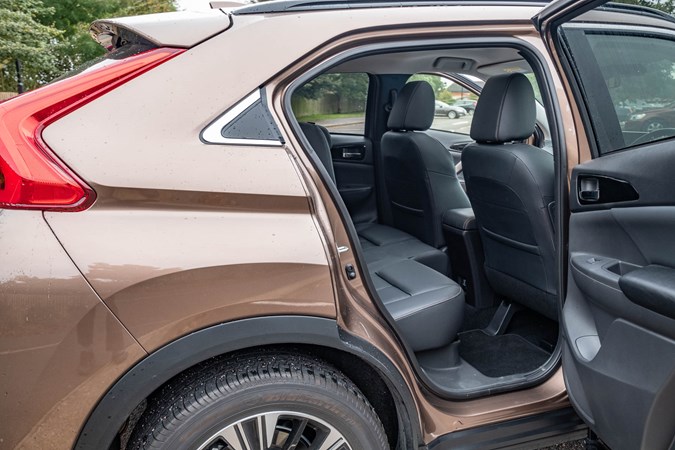
Rear seat passengers don’t just enjoy more space. With their own panoramic roof blind, and rear windows that open a decent way into the door, the Eclipse Cross will win the hearts of your kids before it’s won you over. The centre seat is a little irritating to use, with one of those fiddly roof-mounted seatbelts in addition to the lack of sculpting and support. Heavier objects also seem to mark the leather incredibly easily. Headroom is reduced a surprising amount by the sunroof intrusion – and speaking of intrusive bits, the rear headrests also intrude on the shoulders of passengers or the view for the driver.
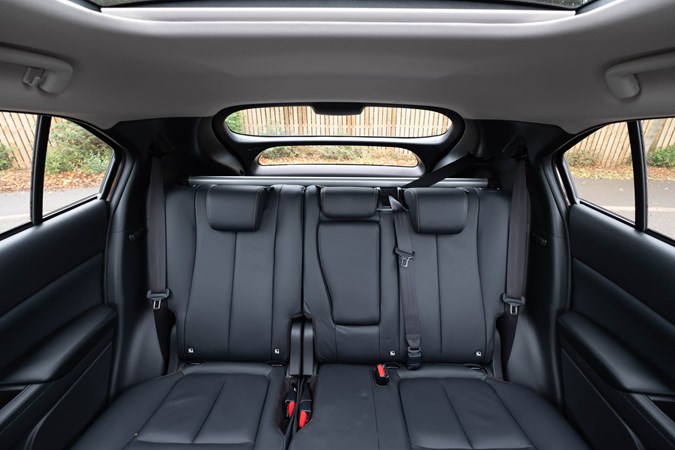
There are bigger crossovers, and different solutions for utilising space in a car of this length, but the Eclipse Cross achieves an impressive balance for the real world – while remaining visually interesting. Clever touches, like storage for the parcel shelf below the load floor, complete the useful nature of this compact Mitsubishi.
Update 4: Obscured by Clouds
We take a trip to see a lunar event, and are thwarted. No Eclipse. Cross.
Driving the Mitsubishi Eclipse Cross 4
Press the start button to the left of the steering wheel and the surprisingly quiet 1.5-litre engine whirrs into life. Underneath lurks technology shared with the World Rally Championshi-bred Lancer Evo – the S-AWC all-wheel drive system works in all conditions, and is ready to provide grip when needed. The chassis is set up for safe, measured progress; take bends too quickly and the long-travel suspension and tall stance remind you that body roll is real. Hang in there, and it all comes together with remarkable ability.
Making use of the clever CVT it can be kept at peak efficiency or peak power as required – you can pull the paddle shifters and jump between eight preset ratios if you prefer more control. I’ve yet to find any reason to do so. The Eclipse Cross builds speed progressively with little drama, and in bends the S-AWC system comes to life. Active Yaw Control can keep it all safe, but until you’re used to the body movement it can feel a little unusual. Ultimately the Eclipse Cross can be driven swiftly, safely and in comfort – it’s inherently stable, but you have to trust the technology wants to work with you. In the wet there’s impressive grip, too.
For long commutes, the adaptive cruise control, kerbside-view when in towns (part of the 360-degree camera) and head-up display are perhaps of more significance.
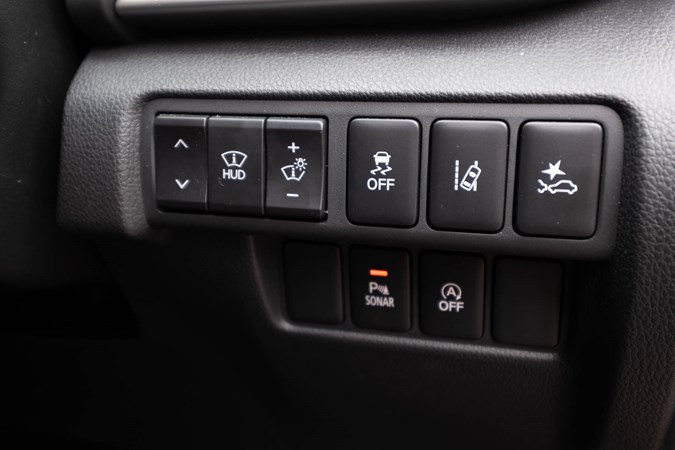
Fortunately for my sanity, there’s a short stretch of country road where actually steering the car can be enjoyed, though, and if you’re fortunate enough to live in somewhere like the Scottish Borders, or much of Wales, this is a brilliant little thing – winter safety and summer fun combined.
Enjoying country roads a little more than necessary has hit economy, though – a drop to 34.7mpg brings the average down to 85% of the claimed figure. Still pretty impressive…
Update 5: High Hopes – Will the Eclipse Cross PHEV be better than the Outlander?
Mitsubishi’s PHEV technology demonstrates hope for the future of driving; is the Outlander really the best showcase, though?
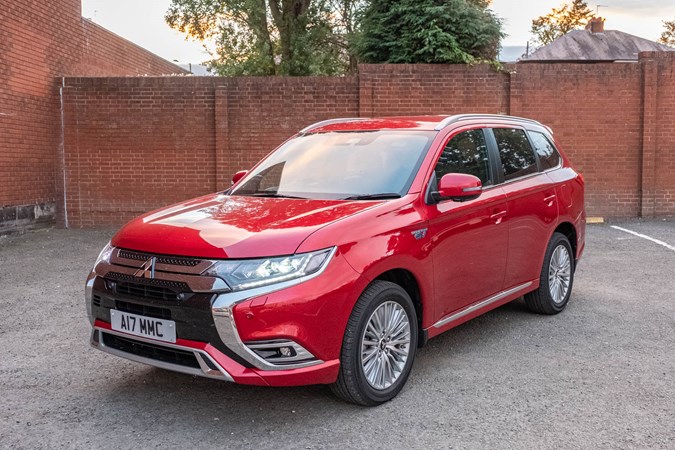
To compare the Eclipse Cross with a different kind of Mitsubishi, we’ve got an Outlander PHEV, in 2018’s refreshed and WLTP-friendly specification.
Under the body is a platform closely related to the Eclipse Cross; the worldwide ‘Mitsubishi GS’ found beneath sporty coupes to American off-roaders and MPVs. They even share the 2.67m wheelbase (as does the ASX) and 1.54m track. It’s clear that the Eclipse Cross and Outlander are cut from the same cloth. Yet they couldn’t be more different in attitude – the Outlander’s staid, functional dashboard disguising a sophisticated plug-in hybrid powertrain, where the Eclipse Cross screams modernity and youth appeal.
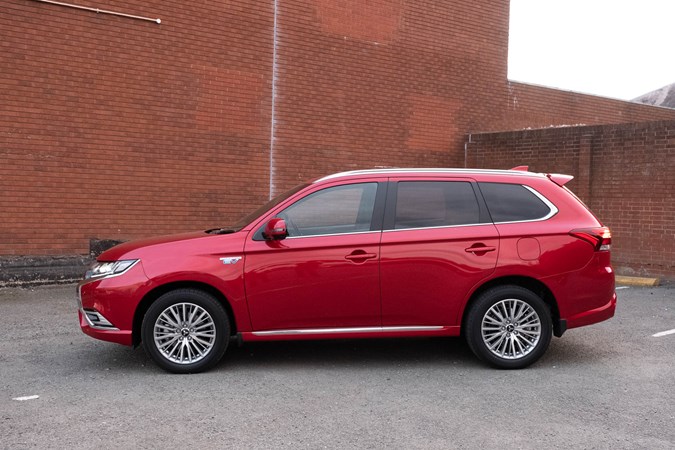
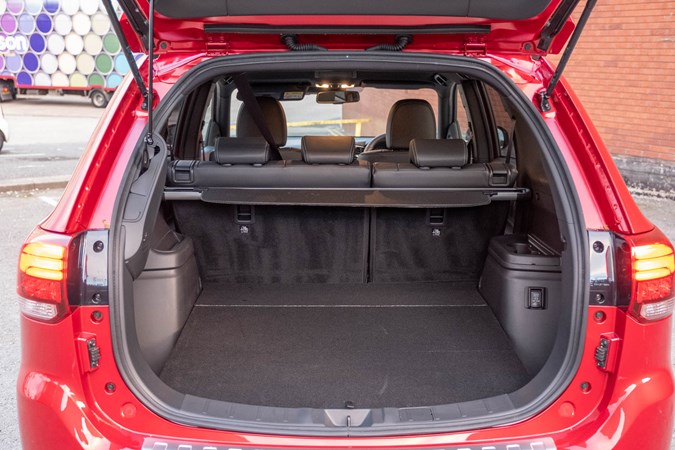
Inside, the Outlander feels less snug, with a wide centre console and tall rear seating area. Some models even come with seven seats; the Outlander’s a good 4.69m long vs. the Eclipse’s 4.4m, and more upright too. It’s also almost 300Kg heavier, thanks to the hybrid bits…
The car of the future, today…
In PHEV form the Outlander’s really at odds with the appearance. With styling that dates back to 2012, it’s not scary despite the tech – which no doubt contributes to its success.
A gentle, stepped whirring sounds like a scaled-down city train when it pulls away. It whispers along, feeling satisfyingly futuristic – the motor sound you hear is artificial, though, Everything’s as easy to use as any conventional car, though. Behind the wheel the Outlander’s steering feels slower, the suspension less obedient in fast bends, and the near 2-tonne mass of the car is not well disguised.
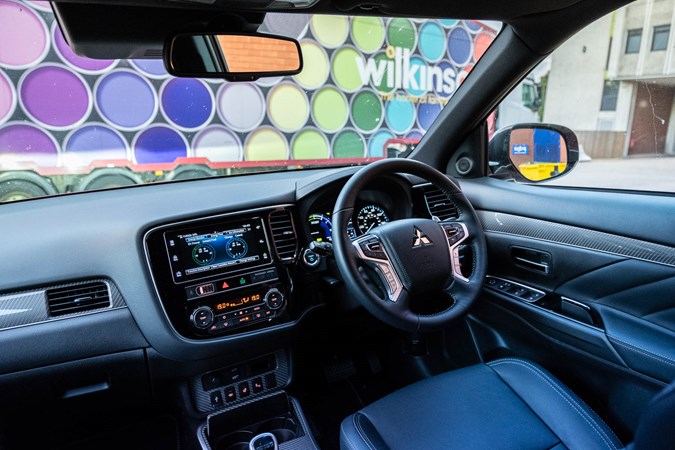
Pulling the Outlander along are two electric motors, fed by a 2.4-litre petrol engine and a 12kWh battery pack. Most of the time the engine feeds the battery, and the battery feeds the electric motors that provide all-wheel drive and incredible low-down torque. Output from the engine is just 135hp and 211Nm – the front and rear motors add 60hp/137Nm and 70hp/195Nm respectively. With everything set to auto, the Outlander whirrs away from standstill and potters around urban traffic rarely bothering the engine; build up to fast motorway speeds and the engine’s doing most of the work and charging the batteries when under light load.
There’s a CVT gearbox which means relatively high engine RPM until cruising speed is attaine. There’s no revcounter, just a dial for efficiency and power source. Sport mode uses the engine and motors’ full potential for quick progress; Charge mode uses electric power produced by ‘wasted’ engine running when in traffic, where 40 minutes of idle time (or an hour of typical extra-urban ebb and flow) can provide 80% charge. Plugging in is the ideal, and full a charge on domestic 13A power takes 5 hours and costs around £1.55. It’s equivalent to a gallon of petrol (or much more in busy town traffic) – a range of 28 miles by WLTP standards,
It fits with the typical usage of many cars in the UK. Covering around 30 miles a day. 10 miles across a city in a conventional car, from cold, is a really brutal situation for both the machine and environment, so the biggest win can be found here. Bearing in mind the weight, bulk and 4x4 capability of the Outlander, using electricity to get around town is very worthwhile – and it’s overall petrol running costs are reasonable too.
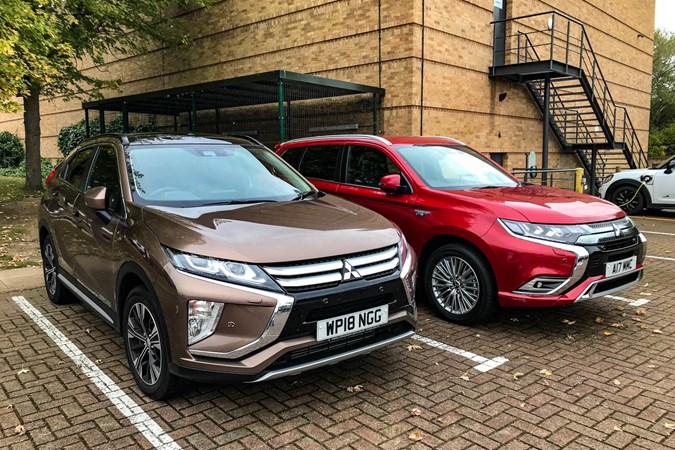
It’s a very tough call between these Mitsubishis. Day-to-day running costs aren’t that different but the PHEV has a massive advantage for city driving,
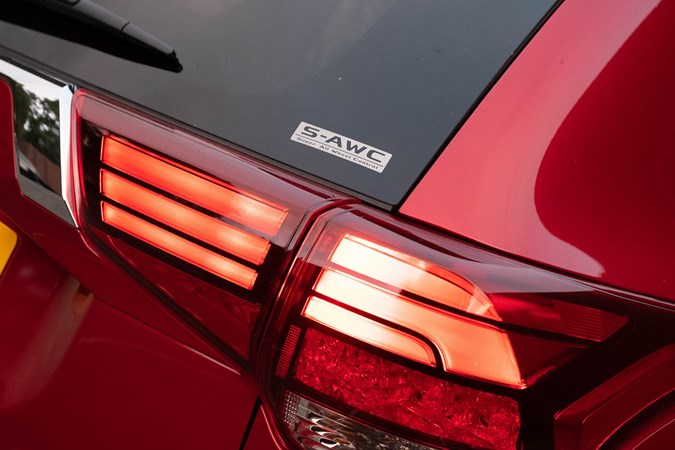
Update 6: PCP Finance – is the Eclipse Cross good value?
On paper the list price of the Mitsubishi Eclipse Cross makes it excellent value – but how does it stack up in PCP finance terms?
The British appetite for crossovers is, frankly, astounding – and as much as I like the Eclipse Cross, it sits in a seriously competitive market. As the highest-specification model, the Eclipse Cross 4 does not look like a cheap car from the outset – so how does it stack up against competitors?
For fairness, this comparison is based on features as much as list price. All of these cars include the following equipment, whether standard or added as an optional extra.
- Automatic gearbox, and the nearest match of petrol engine
- Panoramic sunroof, opening where available
- Adaptive cruise control, functional to standstill if available
- Leather heated seats
- Upgraded audio – Apple CarPlay support where available
In addition, the Eclipse Cross 4 has a couple of features that are harder to find across competitors:
- Head up display
- All-wheel drive
- 360-degree camera
Prices have changed a little since this Eclipse Cross was specified – however, the difference is small, and the monthly payments have reduced slightly, as Mitsubishi has doubled its deposit contribution discount.
All PCP quotes compared below are based on a 36-month contract, with a 10,000 mile-per-year allowance and a £1,300 deposit. Do note that Peugeot doesn’t offer PCP over three years on the 3008, so we’ve had to opt for a four-year contract, which gives the Peugeot an artificial advantage, as longer contracts typically lower monthly payments.
What sets the Eclipse Cross 4 apart from its rivals?
Top of the list is, of course, the styling. I’ll risk journalistic objectivity and go on the record with the opinon that most crossovers are fairly offensive to look at, if not downright ugly. Yet I like many aspects of the Mitsubishi Eclipse Cross – up front, there’s nothing that looks out of place. Likewise the profile, with the bold rear lights, has become something I look forward to seeing after a long day.
If all I can find to pick on is the rear bumper, it’s doing well – and even that has become normal.
Inside is equally pleasing, and aside from some material variety, I actually like the view and appreciate many of the details, such as the arc below the windscreen, the tapered housing for the infotainment screen, and the centre console layout. Despite suffering the standard-issue 40-something bad back and accounting for the lack of adjustment compared to some cars, the Eclipse Cross seats are very pleasant for me.
Controls fall easily to hand too, and visibility is good – surprisingly so given the large pillars at the rear.
Naturally your expectations and shape will be different, but this is a car that fits me well. It also fits passengers – the rear door opening and legroom are particularly impressive for a coupe-crossover.
The fastback tail does mean it fits in a very odd segment of the market, and typical crossovers are perhaps best summed in our family SUV group test.
Additional technology in the Mitsubishi Eclipse Cross
This is where the Eclipse Cross meets our needs, but not necessarily expectations. Mitsubishi’s SDA media system is immeasurably improved by the touch-pad navigation which for the time being, is unique to the Eclipse Cross – but other firms have better media systems overall. The Rockford Fosgate audio is satisfyingly thumpy, in a childish way, but it won’t make your inner audiophile happy.
In a similar manner, the adaptive cruise control and emergency assistance are good enough, useful, and definitely a reason to spend more for the higher specification – but aren’t the best systems available at this budget.
The big win, of course, is in the most important technology – the all-wheel drive and 1.5-litre turbo engine. Once familiar with the gearbox’s relationship to the engine’s output, it’s a very effective combination, and capable of covering ground securely and rapidly with very little effort. Manual transmission cars may be very different, but if buying for myself, the quality of the automatic is very important.
Mitsubishi Eclipse Cross 4 plus metallic paint – £29,020 – £456 per month (36 months)
- Monthly cost: £456 (36 payments)
- Deposit: £1,300 (£1,500 manufacturer deposit contribution)
- Total amount payable by customer if returning car: £16,400
- Total amount payable by customer to buy car: £31,042
- Cash price: £29,020
- Mileage allowance: 10,000 miles per year
- APR: 5.9%
Some alternatives to the Eclipse Cross
Mitsubishi has a nice list of alternatives to the Eclipse Cross ready made – as mentioned in the first update. Unfortunately, I’ve only driven a few so far, and they’re a diverse mix. Those options are also focused on lower-specification, front-wheel drive cars. What can rivals offer if you’ve got the budget for the top of the range Eclipse Cross 4?
Toyota C-HR 1.2 116hp AWD Dynamic: £29,170 – £467 per month (36 months)

Our Car of the Year for 2018, the Toyota C-HR does futuristic well, and is well made too. However, the range is surprisingly limited and the only all-wheel drive model is the 1.2-litre 116hp petrol version, which is at a significant disadvantage against the Mitsubishi. It takes 11.4 seconds to go from 0-62mph and the top speed is just 114mph.
Dynamic trim is closest to the Eclipse, but there’s no panoramic roof option, and adding leather and upgraded sound costs £1,595 for the premium pack with JBL sound (not included in the monthly payment below).
Most buyers looking at the more expensive end of the C-HR range may find the 1.8-litre hybrid more appealing. Interior trim is a cut above the Eclipse Cross, with holographic inserts and textured materials, but the rear space is cramped and claustrophobic by comparison.
- Monthly cost: £467 (35 payments)
- Deposit: £1,300
- Total amount payable by customer if returning car: £17,645
- Total amount payable by customer to buy car: £30,318
- Cash price: £29,170
- Mileage allowance: 10,000 miles per year
- APR: 1.9%
C-HR wins: Interior design highlights and material choices, hybrid option.
C-HR loses: Driving dynamics, interior space and light, dated media system, underpowered all-wheel drive version
Peugeot 3008 Allure 1.2L PureTech 130 automatic with metallic paint and options: £32,704 – £534 per month (48 months)
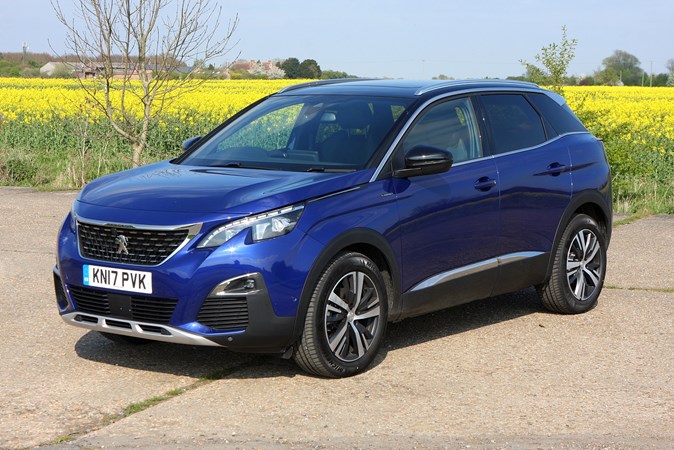
It’s not quite the same, but Keith WR Jones’ long-term Peugeot 5008 is a close match for the 3008 – and that’s what Mitsubishi think you may be considering alongside the Eclipse Cross, so we’ve had a few opportunities for comparison.
They’re aesthetically very different vehicles; SUV ground clearance aside, the Peugeot is very family-focused and upright. Again, interior materials are the biggest leap over the Eclipse – with a tactile fabric dash and attractive piano keys. The actual cockpit is far less appealing to me, though. Some aspects of ride quality are preferable, and the steering is satisfyingly sporty, if a little artificial for my taste.
The big shock, however, is the cost. To get close to the Eclipse Cross 4, it’s necessary to begin with a 3008 Allure (the entry-level Active precludes most optional extras), and the closest petrol engine is the 131hp three-cylinder 1.2-litre. Performance is, on paper, quite close – 0-62mph is around 10 seconds, and top speed is 117mph (the Eclipse Cross top speed is around 127mph, but the CVT gearbox allows very relaxed high-speed cruising). Green credentials are better, with 120g/km CO2 and 54.3mpg claimed. Our long-term test 5008 with the same engine is returning 34.9mpg in real-world use though, which isn’t far off the all-wheel drive Eclipse Cross figures.
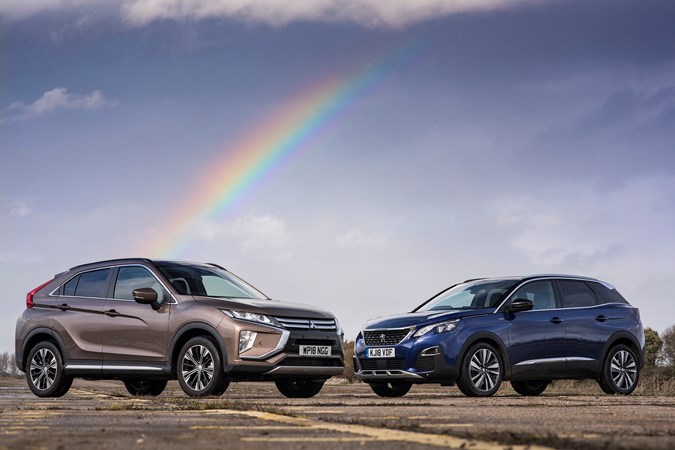
Although the base price of £27,509 is less than the Eclipse Cross 4, the number of options needed to get the same equipment adds an impressive £4,660. Metallic paint is a similar cost, at £575. Some options do exceed the equipment available from Mitsubishi; specifically the 360-degree camera includes automated parking. More importantly, the Peugeot has far higher monthly payments, despite costs being spread over four years rather than three, which normally serves to reduce the instalments.
Peugeot 3008 options to match Eclipse Cross 4 specification – £4,660
- Claudia Mistral Leather Seat Trim
- Panoramic Opening Glass Roof (Includes Aluminium Longitudinal Roof Bars)
- FOCAL Premium HIFI Speaker System
- ACC Stop (Adaptive Cruise Control)
- Advanced Grip Control (includes 18″ Los Angeles Alloy Wheel Option)
- Visio Park 2 (360 Degree Camera System + Automated Parking Assistance)
- PEUGEOT Open and Go (Keyless Entry with Stop/Start Button)
If your budget is a little higher, the £35,929 (with options) 3008 GT Line Premium 1.6 180hp petrol costs £575 per month on the same basis, with better overall specification as standard and performance, It’s still front-wheel drive, though.
- Monthly cost: £534 (47 payments)
- Deposit: £1,300
- Total amount payable by customer if returning car: £26,513
- Total amount payable by customer to buy car: £37,840
- Cash price: £32,704
- Mileage allowance: 10,000 miles per year
- APR: 5.9%
3008 wins: Choice of materials on dashboard, boot space, steering feel, big opening panoramic roof, ground clearance.
3008 loses: Heating and infotainment controls, forward visibility, only hybrid models will offer all-wheel drive.
Of course, if you’re only focused on the monthly cost, the list price really can be disregarded, so we’ve decided to throw a wildcard into the mix…
Jaguar E-Pace P200 AWD HSE: £41,230, £578 per month (36 months)
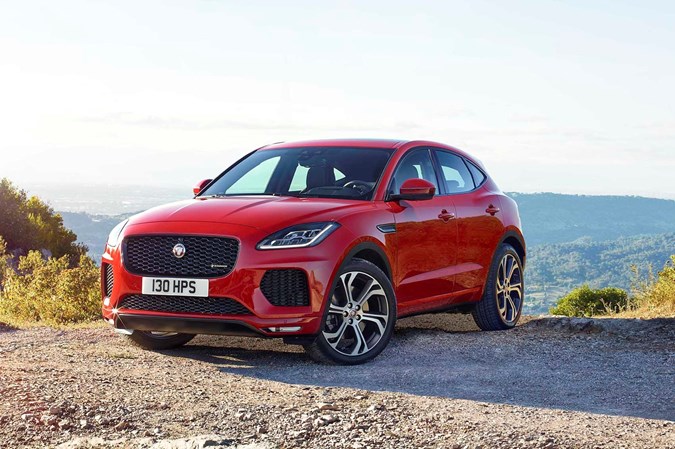
The Jaguar E-Pace is not something that would leap out as a rival to the Eclipse Cross, but they’re closer than you may think. The E-Pace range starts at £28,930 for a 150hp front-wheel drive diesel manual, and offers four-wheel drive from £32,505 with the 150hp diesel and automatic gearbox.
Choose petrol, and your entry level is the P200 AWD, at £33,260. This is a quick and capable premium compact SUV. Specification is lower than the Eclipse Cross, with fabric seats, no sunroof and basic audio; on finance, however, you can take the highest-spec HSE for only £587/month. Adding the sunroof costs £970 regardless of model.
Specifying an E-Pace to match the Eclipse Cross in all areas gets expensive, but if you’re tempted by a luxury badge you may be prepared to make sacrifices.
- Monthly cost: £578 (35 payments)
- Deposit: £1,300 (plus £2,000 manufacturer deposit contribution)
- Total amount payable by customer if returning car: £20,952
- Total amount payable by customer to buy car: £44,490
- Cash price: £41,230
- Mileage allowance: 10,000 miles per year
- APR: 5.7%
Jaguar E-Pace wins: Badge prestige, styling, performance
Jaguar E-Pace loses: Running costs, options are very expensive, residual is high if you plan to keep the car
Is the Eclipse Cross 4 good value for money?
Fundamentally, yes. Higher specification cars don’t always reflect the best value, and a direct comparison between models is always tricky. If you want a 4x4 family car, the Eclipse Cross is a very compelling and capable package for a surprisingly low cost.
Update 7: Speak to Me – Mitsubishi’s SDA audio system and Rockford Fosgate speakers
On the face of it, Mitsubishi’s Smartphone Display Audio (SDA) is either a clever recognition of how media use and technology are charging, or a really basic alternative to a radio that minimises the need to fit different levels of kit to different specifications.
Unlike the traditional DIN-sized (or double-DIN for those with screens) box, there’s a flat screen on the dashboard, and that’s the lot. There are no mechanisms and the software is very basic.
However, everything infotainment-wise I’ve done with the car since getting it has been powered by my iPhone, from making hands-free calls, to navigating using Waze, or listening to stored or streamed music.
For most users with a smartphone, it’s probably the most efficient, brilliant system; for users without, this is a good reason to buy an old one to get some navigation and streaming. An iPhone 5S will support CarPlay, so you don’t need to spend a lot.

The touchpad is also genius – going back to cars with pure touchscreens, I miss it so much. Once familiarised it really is quick to use, and unlike some multimedia interfaces, it avoids being too fussy.
SDA does support some basic media playback features, and Bluetooth calls, all of which can be accessed by voice control. That button is usually employed for Siri.
Fortunately the Eclipse Cross 4 has the upgraded Rockford Fosgate audio, which lifts the otherwise sparse SDA system to a more entertaining level. Without it the Mitsubishi would have four channels of 35W audio.
Who are Rockford Fosgate?
For UK buyers, the brand Rockford Fosgate may seem unfamiliar. An American brand founded in the 1970s, Jim Fosgate created some of the first bespoke car audio products like aftermarket amplifiers – and also had a hand in the technology behind Dolby surround sound and quadrophonic sound decording.
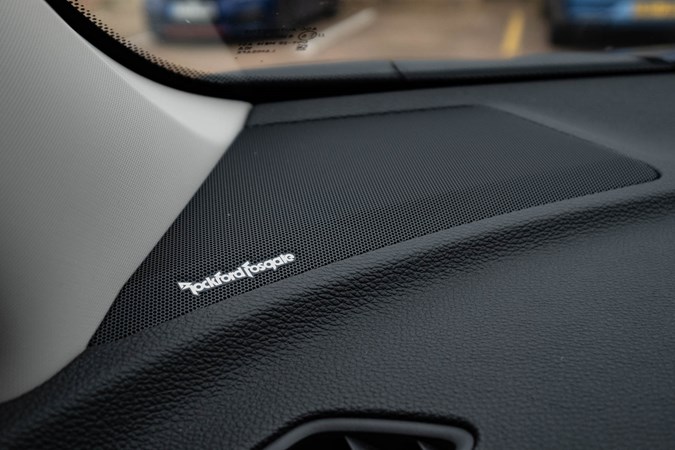
Unlike the name-checking, celebrity endorsement of things like Beats Audio where a brand is applied to a more generic corporate product, Fosgate’s name comes directly from the pioneer responsible for the circuits and later, algorithms they built a reputation on.
In the audio menu is the appealingly titled ‘punch’ setting, which seems obvious enough – it’s a loudness control, right? The effect may seem that way, but it’s actually a trademarked term for Jim Fosgate’s pioneering EQ and filter for car audio, which boosts low frequencies and selected treble frequencies.
Paired with a digital signal processor (DSP) that tunes the output for each speaker to the car they’re installed in, the effect is an audio system that, er, punches above its cost.
Far from being some unknown then, the Fosgate logo ties the Eclipse Cross 4’s 710W audio system directly to the advanced features offered by the DSP processor and speakers.
What’s the Eclipse Cross audio like?
It supports DAB and FM radio – though the audio processing is disabled for those sources beyond basic EQ. There’s no CD player, nor is there an aux input, but it does have two USB ports, Bluetooth and both Android Auto and Apple CarPlay.
Radio reception is good, and audio playback is clear; talk radio like BBC Radio 4 is very comfortable to listen to at lower volumes without struggling to understand what the politicians are arguing about*.
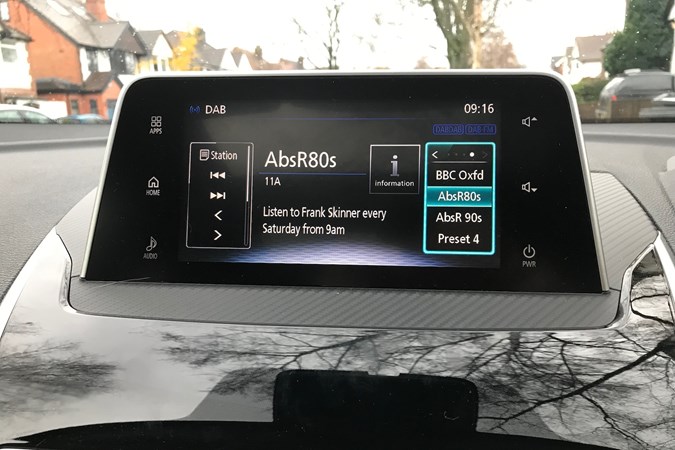
Switch to Absolute ’80s and Prince sounds as good as rose-tinted memories ever can, Radio 3’s dynamic range isn’t lost and Hancock’s Half Hour on R4 Extra sounds disturbingly un-muffled (and misogynistic, and so forth).
Switch to a media source and the EQ, surround sound and punch features are active. Full volume is loud enough – and thumpy enough – to feel like a boy racer.
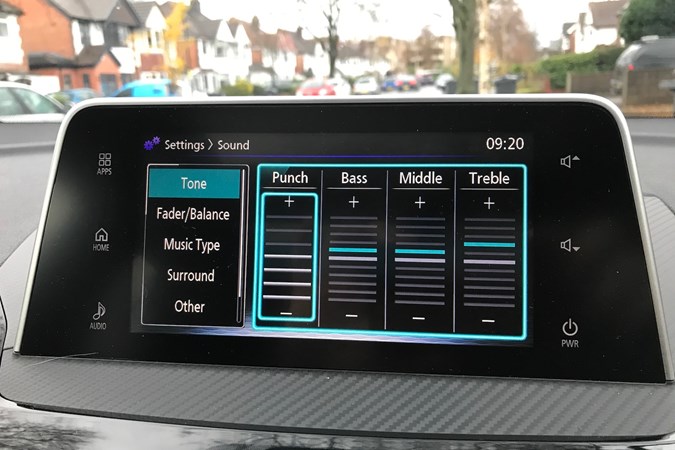
Put some ’90s electronica on, and there’s a pleasing lack of buzzing and rattling from the interior even with Orbital at full blast. Mitsubishi might not offer something at the level of Land Rover’s Meridian setup, but for a sub-£30,000 car it’s great, a much-loved small town nightclub rather than a stuffy concert hall.
How many speakers does the Eclipse Cross 4 have?
There are two 1.0-inch dashboard tweeters, two 6.5-inch front door woofers, two 6.5-inch rear door speakers including coaxial tweeters and a rear mounted 10.0-inch dual voicecoil subwoofer, for a total of nine speakers driven through eight speaker channels via a 710W DSP amplifier.
Although the SDA head unit is relatively new, the nine-speaker setup with subwoofer has featured on past Mitsubishis – such as the Lancer Sportback GS4 and the Evo X.
Does the Eclipse Cross have surround sound?
Yes, though it’s DSP driven virtual surround – there’s no centre speaker. Both dts surround sound and PremiDIA-WIDE are offered, the former being best suited for recordings made to take advantage of the industry-standard processing.
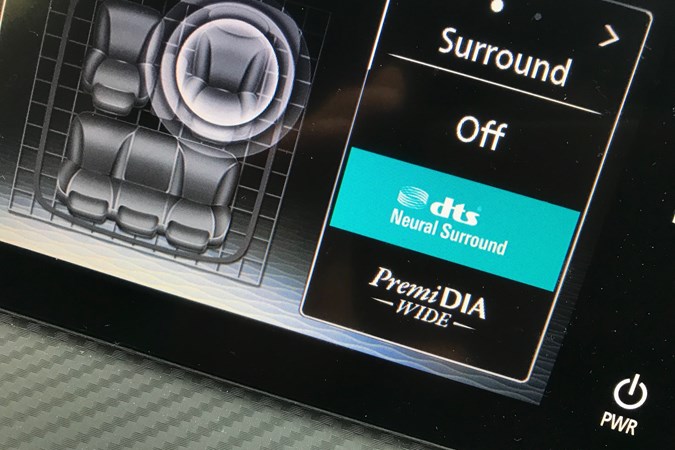
Many songs and soundtracks are recorded for Dolby ProLogic and similar encoded surround formats – from Michael Jackon’s ‘Thriller’, which places the footsteps of approaching zombies all around the car in the HIStory DVD 5.1 mix, through Azimiuth Co-ordinator-intact ‘immersion edition’ Pink Floyd recordings, to Isao Tomita‘s 1970s quadraphonic synthesizer classics.
Choose the correct version, remastered for modern systems, and the swirling analogue synthesizers of Arabesque No. 1 or the pizzacato pops of Passepied jumping around the listener all come through astonishingly well.
Though the car lacks a CD player, the processing works fine on MP3 and other digital files. dts Neural surround sound can still decode those signals and create a virtual centre speaker for a simulated 5.1 surround mix in the car. It can be configured to suit all occupants, front occupants or just the driver – which is remarkably effective.
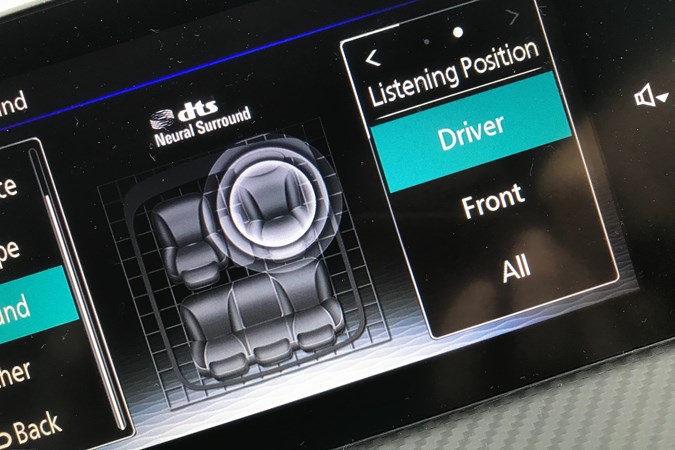
A stereo source will have a virtual surround mix applied, which can sound a little flat sometimes – PremiDIA is more suited to those sources if you want a lively, sparkling audio reproduction, and I’ve tended to use that more for a way of adding that cheap-thrill punch to rather flat pop recordings.
Audiophiles will be pleased to know that support for USB devices includes the ability to play lossless FLAC, Vorbis and uncompressed WAV files as well as unprotected AAC, MP3 and WMA.

PremiDIA is Mitsubishi’s way of processing sound to be driver-focused (or split between front and rear occupants) without special recordings. It can create a stereo spread with a more pleasing, if technically inaccurate, soundstage and presentation. Unlike Dolby, dts and Rockford Fosgate, this is Mitsubishi’s own audio technology, which has evolved over several years.
Dolby volume is also included, which dynamically adjusts the volume of different tracks and sources to avoid sudden changes in loudness.
How are handsfree calls on the Mitsubishi Eclipse Cross?
Having only tested this with two phones, and both on O2, it’s unfair to suggest an absolute rating. On Huawei’s Android-based P9, the quality was muffled, though signal remained good. With an iPhone 7 Plus, sound from the car is okay – albeit quiet unless at full volume, and annoyingly unable to move which speaker it’s coming from. Users on the other side of the call suggest that audio drop outs were quite common.
It falls in the middle of cars tested with the same iPhone, where Audi tends to be best. Ease of use for bluetooth calling is OK; with both Android and Apple platforms their own voice commands are simply better.
Is the Rockford Fosgate upgrade worth it?
Absolutely. It’s part of the package on the Eclipse Cross 4, and contributes a lot to how much value the higher specification adds to the car. When testing cars, it’s easy to lose sight of what you get for a particular budget – plenty of £40,000 plus high-spec SUVs and executive cars with optional high-end audio can lead to unrealistic expectations.
More to the point, aspirations to take an audiophile approach to car entertainment systems can be an endless rabbit warren; a story comes to mind from a Jaguar engineer in the 1980s, who specified an impressive set up for the upcoming XJ40.
The board rejected the system, with the harsh reality of a budget of £100, rather than the near £400 he’d specified.
‘£100 for the head unit?’
‘No! £100 for the lot!’.
Even in the early ’80s, that was about enough for four paper cone speakers and, if memory serves, a Pye cassette player. A 21st century sub-£30,000 car is going to have some tight budgetary constraints, and there’s already a lot of technology in the Eclipse Cross.
Mitsubishi and Rockford Fosgate have done what many hobbyist car audio enthusiasts strive to achieve, with a dash of surround-sound wizardry – an affordable, pleasing setup that can produce enough volume to amuse, enough clarity to please the average keen listener, and tight enough integration that nothing buzzes or looks out of place.
For the class and budget of car, it’s pretty impressive.
‘Hey Siri… play Robyn’s latest album’.
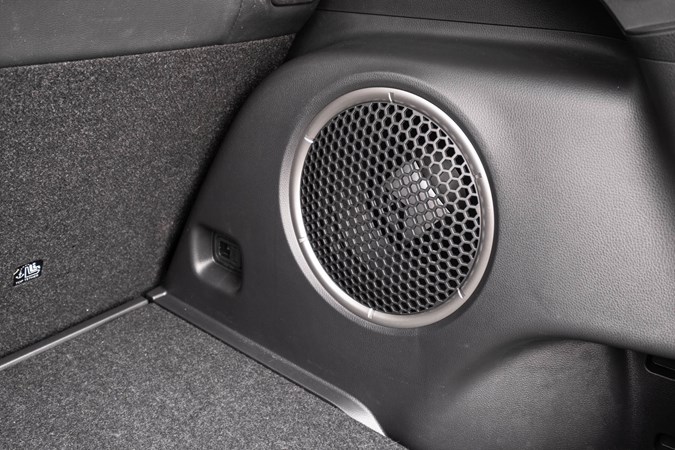
* It’s probably Brexit, to be fair.
Update 8: Apples and Oranges – Can the Mitsubishi Eclipse a couple of popular rivals?
Thanks to this family crossover group test, a chance to get behind the wheel of two strong Eclipse Cross rivals couldn’t be passed up.
Taking some time behind the respective steering wheels of the Hyundai Kona and Skoda Karoq, after almost 10,000 miles in the Mitsubishi, provides two very different firms’ approaches to this class of car. Both are popular choices, too, with the unscientific barometer of ‘How many do I see during the commute’ surprisingly biased towards the Hyundai.
(Shout out to the two Eclipse Cross owners I’ve passed this month. It’s a good looking car in black, too – and colleagues report seeing many more on the roads generally).
Hyundai Tucson SE Premium 1.6 T-GDI
Grabbing the keys to the Tucson, I’m at a slight disadvantage in that it’s not a model that’s crossed my path before. The engines and underlying technology are a total mystery at this stage, and the only Hyundais I’ve driven prior to this have been the rapid i30 N, a short trip in a Kona, and an old 1990s Pony.
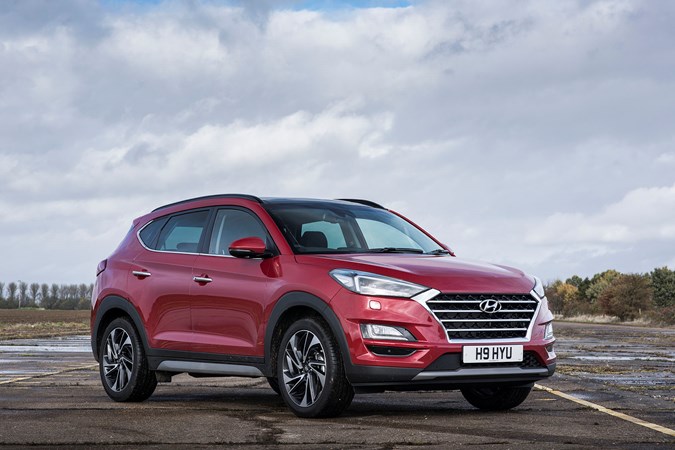
Apparently it’s a turbocharged 1.6 GDI in SE Premium trim, with a manual gearbox. At the first wet roundabout it’s also revealed to be front-wheel drive, scrabbling for grip as the 177hp engine roars towards the redline.
You might be forgiven for thinking ‘well, if you will drive like a prat, that’s what you deserve’, but this was at fairly tame speeds, merely trying to keep the same pace the Eclipse Cross will carry through the same junction without being rammed by belligerent Peterborough commuters. I honesly thought the Tucson’s engine was considerably smaller.
If nothing else, this underlines the value of having all-wheel drive. It is available, but only with a diesel, mild-hybrid model costing somewhat more than the Eclipse Cross at £34,945 with leather and panoramic sunroof.
Tucson highlights
What’s frustrating – aside from the limited availability of 4x4 – is that the Tucson is a very solid, very spacious box on wheels to cram some kit into. Interior trim has a few token soft-touch and leather-effect panels but overall feels cheap, yet there are fan-cooled seats and a really good size of opening panoramic roof on the Premium SE. Rear passengers also get heated seats, and there’s a load of boot space when compared to the coupe-like Eclipse Cross.
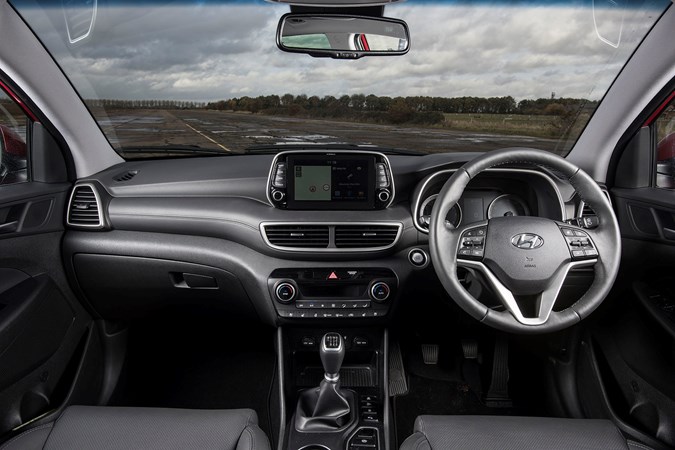
Unsettled, uninspiring handling, poor grip and just a general feeling of being less mechanically refined put me off before any of the kit can impress, though.
Skoda Karoq 1.5 TSI SE L manual
Here’s something a little more familiar. I’ve found Skoda somewhat mixed personally; the Superb Estate is one of my favourite cars (particularly in 280 4x4 form, like our long-term test car in 2017) and on a rational level, it seems hard to imagine a British family needing anything more than the roomy Rapid Spaceback (now replaced by the Scala).
Yet Octavias don’t really appeal, and much as I liked our long-term Kodiaq, the underlying samey-ness of Volkswagen Group cars does little to inspire an emotional response in me.
So the rather basic-looking Karoq faces an uphill struggle against the shiny Eclipse. No sunroof, no automatic, less power and front-wheel drive?
Of course, it costs a little less, and a quick glance through the options catalogue reveals a wonderful range to pick from. Tying into the last update, a 10-speaker 550W audio upgrade is just £400, for example. Starting around £26,000, a nicely-equipped two-wheel drive Karoq can be put together for the cost of the Eclipse Cross 4 – without sunroof or leather trim though.
If a 4x4 model were necessary, the 2.0 TDI 4x4 is just under £29,000 without options.
Skoda Karoq vs Mitsubishi Eclipse Cross
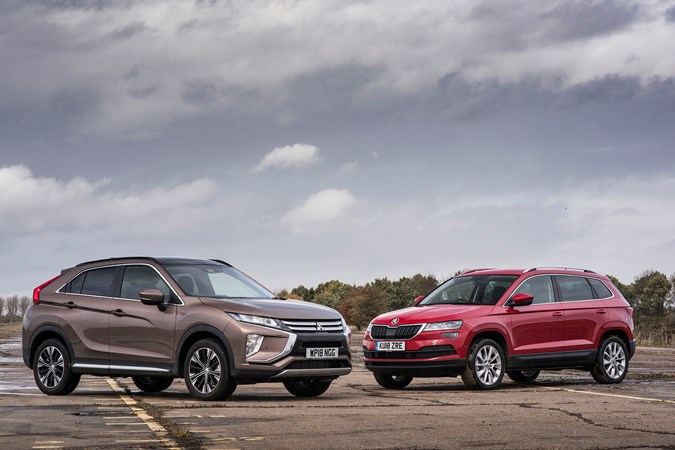
Basic it may be, particularly in red with stark black bumper trims. The rugged appeal battles with an almost bland lack of detailing, something that the Scala suggests will begin to soften in future Skodas. As the replacement for the characterful (and compact) Yeti, the Karoq feels too serious to me.
It’s got the solidity to back that up though. Despite slightly less power and fewer driven wheels, it feels swift enough and takes fast bends surprisingly well for such a tall stance of car. There’s little trickery here, just the usual stability controls, but there’s enough feedback to let the driver have genuine control.
It’s a very different experience to the Tucson, which feels anxious and uncontrolled, or the Eclipse Cross with that Lancer-Evo-esque S-AWC style of intervention that allows cornering very much at odds with the attitude of the car’s body. A skilled driver can enjoy the Skoda’s consistency, yet it’s also effortlessly safe for those who just want to get from A-to-B.
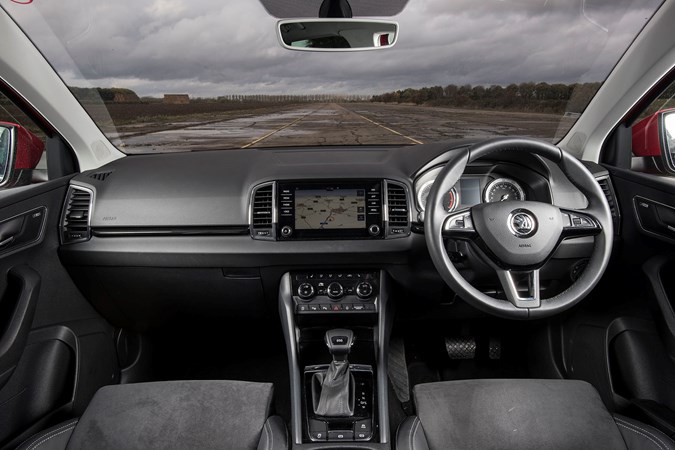
Supportive fabric trimmed seats keep the theme of common-sense austerity. Refreshingly free of any veneer of exclusivity, the underlying quality of the plastics and trim in the Karoq shines through. Would you rather have a shoddily-constructed chrome-trimmed switch, or some plastic that will last until world ends that fits perfectly?
Huge boot space, decent rear legroom and great forward visibility go a long way to making the Karoq feel deeply rational and sensible too. Performance is adequate from the 150hp 1.5-litre engine, economy is comparable to the Eclipse Cross at motorway speeds, and slightly better in town.
Parkers – sorry, Richard’s verdict
Since I don’t need the much larger bootspace of the Skoda Karoq or Hyundai Tucson, the Eclipse Cross is still a clear winner for me. It’s more visually interesting inside and out, and although it could use more power overall, it uses the power it does have extremely well.
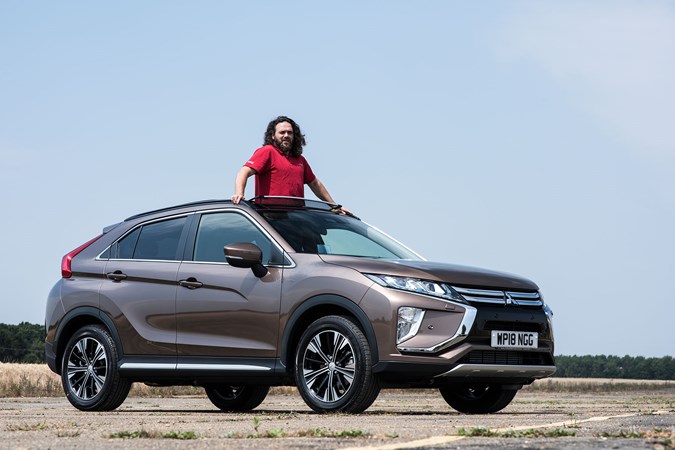
If the Karoq were equipped to the same level as the Eclipse Cross, it would be a much more expensive choice. I really appreciate having all-wheel drive at a sensible price, though, and if the space were a priority the Karoq impresses with a mature feel and quality over glitz approach to the dashboard and trim.
Between the Karoq and the Tucson, there’s just no contest. The Skoda is fundamentally the better machine in my opinion, and no amount of distracting kit and leather-wrapped trim can divert attention from the inferior experience behind the wheel of the Hyundai.
Update 9: Round and Around – slightly ahead of schedule, the Eclipse Cross gets a service, and an upgrade
Some things seem pretty straightforward; most of the time we have a long-term test car for a duration shorter than the service interval, and on the rare occasions they need a service during their tenure at Parkers, we get them booked in with time to spare.
The Eclipse Cross has hit that interval sooner than anyone expected, and worryingly close to the time it should return to Mitsubishi – right as Christmas holidays approach. Coincidentally, it’s also as I finally got around to taking my own car – the Fiat Fullback LX – for its first service. Events that combine rather neatly, as Fiat want a staggering £408 to change the oil and filters on my Mitsubishi-built pickup.
Naturally once I’d recovered from the shock, I called Close Mitsubishi in Peterborough and enquired about the cost from the manufacturer’s network rather than the brand on the grille… a more reasonable £255, which includes checking the transmission and differential oil levels as well. Quite why Fiat need an extra hour of labour to accomplish this is beyond me.
During the Fiat’s service, it was pointed out that a couple of recalls were due on my Eclipse Cross, so it was arranged to bring it in the following day. As it happened, the distance remaining before the next service meant the dealer recommended getting that done as well, meaning I’d be able to use the Mitsubishi over the holiday period, and they slotted it in to their existing workflow with a lift back to the office.
Impressive service, and though the dealer’s aware that this is a press test car, some time spent chatting to other customers getting services and recalls applied suggests it’s the norm for the Peterborough branch. With a convenient service to be dropped off at work and collected, there was even an opportunity to experience an Eclipse Cross from the passenger seat, albeit a manual-transmisison 3 specification. It seems the six-speed gearbox gives equally relaxed cruising at motorway speeds, and the fabric interior feels pleasant, particularly where the matrial on the doors provides more tactile contrast than the plastic to probably artificial leather on the higher-spec car.
It’s odd not having the sunroof, mind.
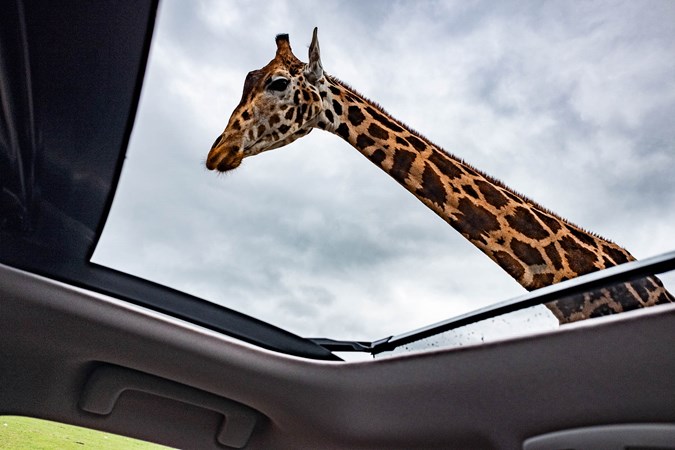
Mitsubishi Eclipse Cross 12,500 mile service – £207
The first-service rate of £207.18 inc. VAT is largely made of the hourly £84.95 ex. VAT labour rate, at 1.2 hours to change the oil and filters, check the differentials, lubricate the propshaft and so forth; it’s reasonable for a four-wheel drive car, though the appeal of prepaid servicing increases when you consider the next service will involve more work. There’s no charge for the recall, but for other, chargable firmware updates to the car systems it seems to take around 20 minutes.
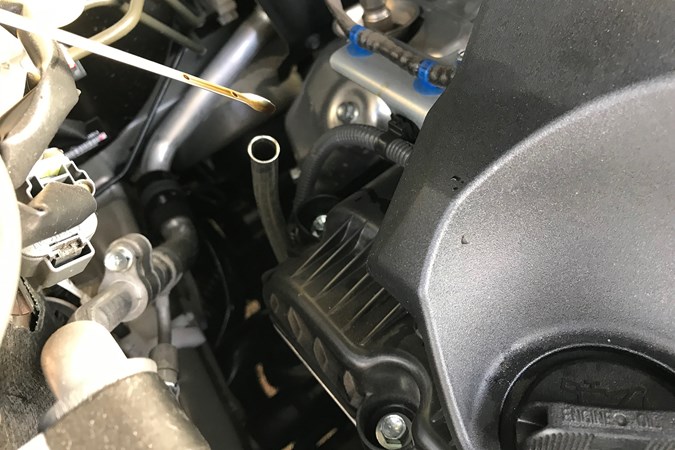
The attitude of the dealer may affect the cost of such updates dramatically; I’ve experienced overpriced minimum hourly rate charges for updates to critical systems (thankyou, Citroen) and free-of-charge upgrades to infotainment systems (courtesy of Mazda) alike.
In the meantime, though the recall should calm down the erroneous BRAKE! messages when driving past parked cars and shadows, and apparently reduce the noise made under autonomous emergency braking, it seems to have had the opposite effect in certain situations.
Attempting to overtake a slow vehicle in 50mph average cameras not only resulted in the Eclipse holding well below 50 in the outside lane despite no vehicle in front, when pushed forward the displays protested with the aforementioned warning – apparently for the large van alongside!
Adaptive cruise does seem smoother and better at tracking cars as they slow down. It’s a little slow to pick up the pace afterwards, and not just in Eco mode, but the slightly jerky progress when using the throttle and adaptive cruise is reduced, making overriding the speed more comfortable.
After the service it seems that the ECU has recalibrated, too – with the Eclipse Cross feeling a little quicker off the line. That’ll probably revert to my style after a few journeys.
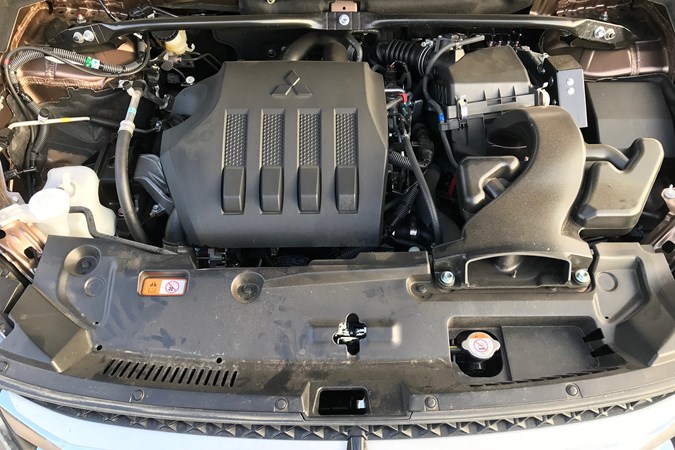
Update 10: Goodbye Blue Sky – taking the Mitsubishi Eclipse Cross to the Scottish Borders
Service indicator reset and a small break for Christmas and New Year gives a rare opportunity for the Eclipse Cross to break-out of the daily commute. The destinations? That little cluster of towns around the Scottish Borders area of Roxburghshire, namely Kelso, Hawick and Galashiels, followed by a trip to South Yorkshire afterwards.
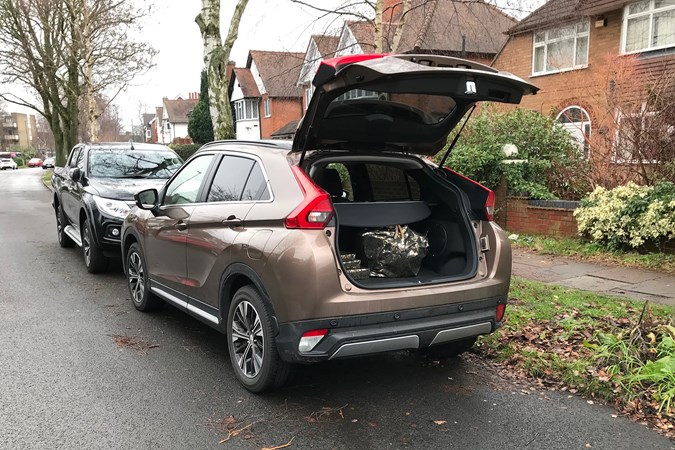
It’s necessary to escape the delights of the West Midlands first, though, so an interminable amount of M42 and M6 has to be tackled. This is probably the longest time Rachel has been in the Eclipse’s passenger seat. and with relatively few adjustments discomfort seems likely. As we pass Tebay services, however, there are still no complaints, and a fair amount of praise for the heated chairs.
From the driver’s seat, it’s as comfortable as ever. Again, spoiled by multi-adjustable massaging chairs in even mid-range Mercedes-Benz, Volvo and Peugeot models the Mitsubishi seats could come in for some crticicism, but for this kind of driving, they’re surprisingly good. It could be luck that they fit me well, but having found many cars cause some discomfort when other drivers have been content, it seems fair to conclude that Mitsubishi got the seats fundamentally right, and thus don’t need to include a lot of adjustable parts.
Getting into the Borders, there’s a revalation – suddenly, after months of seeing barely any Eclipse Crosses in the wild, they’re everywhere. Driving through the first village I lived in there, there’s a silver one just a couple of houses up from my old cottage, parked in ‘my’ spot.
As we progress from Stichill, past Smailholm and then down towards Gattonside in search of the popular viewpoint of Scott’s View, where you can see the beauty of the Eildon Hills, another couple are spotted wandering around.
Our Eclipse gets to tackle the narrow twisty road up towards Bemersyde relatively unbothered by other traffic – the weekend before Christmas is a quiet time.
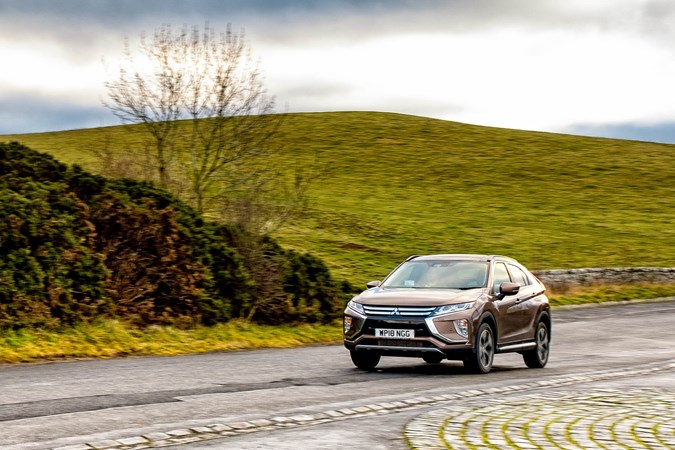
It’s a car that fits this environment well, particularly in this colour. Around the roads that inspired drivers like Louise Aitken-Walker and Jim Clark the long-travel suspension and sporty attitude of the body, recalling the last sporting Mitsubishi Lancers offered in the UK (the Ralliart-tuned Sportback echoed in the roofline, the Evo X commemorated in that clever split rear glass), tempts more entertaining driving without risking discomfort. Unlike the smooth motorways and elongated A-roads of England’s midlands, though, the chaotic, volcanic landscape of the region play against the 1.5-litre turbo and CVT gearbox; any attempt to be really engaged with the road results in a rather fussy battle between torque, time and turning. Build speed towards a bend, lift off and it all gets a bit disjointed when you want the power back, and in these situations you’re reminded of the weight of the Eclipse, and relative lack of power.
It’s so well-masked in less difficult environments that it comes as a shock, and to be fair to the Mitsubishi any bulky, automatic, small-engined car will face the same realities of physics. Time for a change in attitude behind the wheel after some time taking in the landscapes where Thomas the Rhymer was taken by the Queen of Elfland. A long way from shopping centres built around Poundland and the ribbons of grey motorways tying the midlands together; there’s a magical quality to this area.
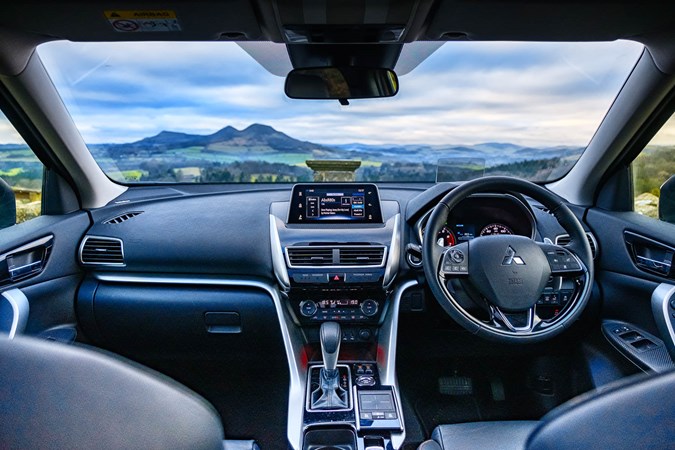
It’s not a bad place to contemplate a change of pace, though there’s a lack of storage places in the cabin to hide snacks. Getting around slowly plays to the inherent smoothness of the engine and CVT gearbox, and for the time being the B6397 and A7 are calm places to be, as we leave Walter Scott’s favourite contemplation location and head to the newly-reconnected Galashiels, where the old Waverley Route from Edinburgh to Carlisle has made a resurgence. A lap of the town shows how things have been affected by a large retail park; since moving away from the Borders a decade ago some aspects have been utterly transformed, yet the pavement around old haunts looks exactly the same. It’s an odd feeling indeed.
Galashiels has been through a few turbulent periods and seeing so much of town centre closed, with shops as vacant as the stares from unemployed teenagers sitting around Bank Street gardens is, frankly, disheartening. A whole strip of 1960s-looking units lie empty bar a betting shop or two, and big brand stores on the pedestrianised Market Square are closed, but not absent – relocated to the cold expanse of retail – dominated by Tesco and Asda, curiously accessed though the still-shoogly potholed remnants of Paton Street; the college halls are further out, and there’s nowhere to dance, dreich rain instead of snow, but the Cherry Blossoms have been replaced.
2019 may well be promising, though, as not only is the Borders Railway thriving after opening in 2015 with a rather impressive transport interchange encouraging more activity on the opposite site of Gala Water, the centre of the town will be hosting The Scottish Tapestry (or The Great Tapestry of Scotland) and it seems likely that the same improvements such as arts and crafts, artisan food & drink and local entertainment that have helped Kelso remain appealing to tourists and visitors – despite a lack of rail connection – will follow.
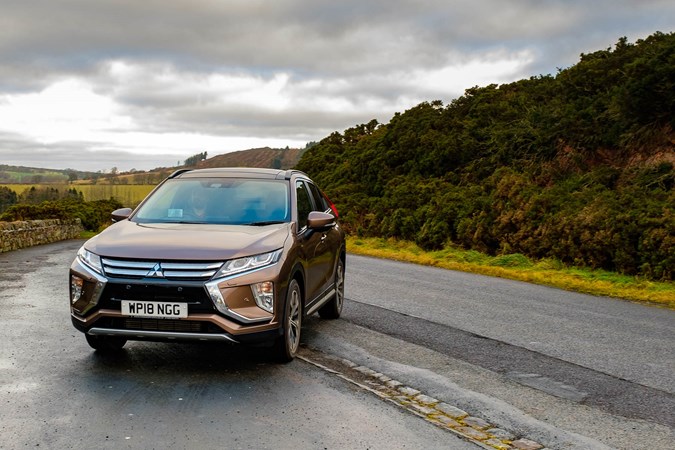
Galashiels is a short stop, however, as I’ve planned to show Rachel the wilder areas of the Borders that are closer to my heart. It’s not exactly the weather for exploring, so the Eclipse Cross seats are going to be a handy perch from which to witness the expansive, occasionally harsh landscape of the Cheviots south of Hawick. Like Galashiels, Hawick’s fortunes after the 2008 crash seem to have been somewhat mixed; the tail-end of Blair-era optimism taking shape as the Heart of Hawick, an ambitious regeneration of Victorian industrial centres that fell into dereliction. Key to this is the former Corn Exchange, a place that I remember more by reputation as Bogart’s nightclub, which burned down the year I started college there (unrelatedly, I assure you). Joining this is the impressive Tower Mill, housing a 14-foot waterwheel in the path of the Slitrig water.
Opening in 2007, the Heart of Hawick brought arts and cosmopolitan cafes and connectivity to one of the Borders’ most remote large towns, but as we drive down the High Street and see crucial locations like Sonny Murray’s Uni-Parts (Hawick, like China, has a cavalier attitude to trademark infringement) store still whitewashed and shuttered years later, it’s hard to find much to be enthusiastic about having come from the area.
Life hasn’t aye bin in Hawick
Teries may hold fast the concept of ‘aye bin’, that things don’t change and have always been that way, but as the 19th-century pomposity of the town hall and overall architecture broadcast, this town once had the highest per capita income in Britain.
Things do change, apart from a general suspicion (okay, deeply held hatred sometimes) of folk from Galashiels and Kelso, and Hawick’s illustration of postwar entropy is almost heartbreaking. It’s still worth visiting and in some ways, still feels like home, albeit a rather shabby reflection. We drive past the Heart of Hawick, past the quiet – hopefully, for seasonal reasons – factories of Lyle & Scott and follow the aforementioned Slitrig water out towards Newcastleton on the B6399.
For many this route is just an alternative to the fast-flowing, single-carriageway A7 that serves as the major trunk route from Carlisle to Edinburgh. In Hawick, though, it’s a reminder of just how little the rest of Britain cares for areas bordering two ‘countries’ as it were; when Beeching swung a metaphorical axe fuelled by Ernest Marples’ self-serving thirst for motorways, the North East lost hundreds of miles of railway with no prospect of investment in transport. Edinburgh, Galashiels and Tweedbank may be reconnected, but with much of the trackbed lost connecting other towns, it seems that continuing to Carlisle is going to be an expensive, and unlikely, task.
Hawick’s railway line, a lonely place through this desolate landscape, can still be seen boldly cutting through the countryside. It’s easiest to pick up at Stobs Camp, a former military camp used later for prisoners of war, spotted by the still-standing gatehouse of Stobs Lodge. It crosses private land here, but can be picked up and walked down until you reach Shankend Viaduct.
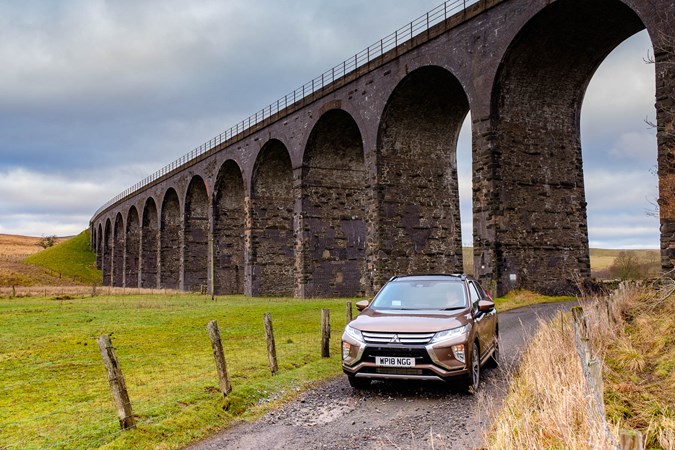
We drove, of course, and a fuzzy memory of which viaducts and bridges are where ensured Rachel was subjected to a rather bumpier track than anticipated as we turned off towards the handful of houses nearby. The Eclipse Cross has no issue with this stretch of road, happly bouncing over the ruts and effortlessly pulling out of a muddy verge after turning around. Hardly challenging, but again, showing how much sense a crossover makes for rural areas like this compared to a family hatchback or a cruder, more purposeful 4x4. When exploring these areas as a local, it was from behind the wheel of a Land Rover 109-inch van or a couple of soft-top Suzuki Vitaras; the idea of then driving these to the midlands is pretty frightening now.
If you continue down the route with your eyes to the right, you see the track reaching Whitrope Tunnel (we’d recommend keeping your eyes on the road, though, as it’s a little twisty) and then the Waverley Route Heritage Association visitor centre of Whitrope Siding, which it’s reassuring to see has acquired some rolling stock.
How does the Eclipse Cross handle B-roads?
Rolling stock seems apt, as these roads were once tackled with confidence in things like a Mazda RX8 or Subaru Legacy 4Cam Turbo. S-AWC or not, the Eclipse’s tall stance, soft suspension and feedback from Rachel brought speeds down very rapidly, but even then there’s a difficulty in balancing progress and comfort. At 20-35mph around moderate bends, the Mitsubishi takes a while to resettle and in a series of turns, the lack of side bolsters on the seats becomes apparent too. It’s not bad, but it slows you down a lot if you’ve got other people in the car to consider.
Rather curiously, Rachel’s comments on the road and handling were at odds with my own experience, but she found my yelps of frustration at unexpected bumps and lumps in the road inexplicable. The conclusion is that the Eclipse Cross does an oddly good job of isolating harsh road surfaces, but they’re felt on the side where they are, rather than the whole-car thud many vehicles create. Feel it through the seats, feel it through the wheel, but not, it seems, through the body.
With a strong mist rolling in, the dashboard pings up an urgent need for fuel. We’d driven through Hawick just a few miles back, having been told of a new petrol station in Newcastleton, with a range of 50 miles; the hard work of slow corners and hills had slashed that range. We faced a rather tense drive for a while, and passed by Hermitage Castle.
For fans of ghost stories, the remains of the Waverley line from Whitrope continue to Riccarton Junction. There was no time to visit this time, but I know from experience that the Mitsubishi would have no issue with the forestry service road that leads to the abandoned town; once home to 30 households and about 119 people, the town existed purely because of the railway and had no road access, despite having a school and post office. Beeching’s cuts literally cut the location off, but you can stand on the remains of the platform and on a misty day, imagine waiting there for your only escape route.
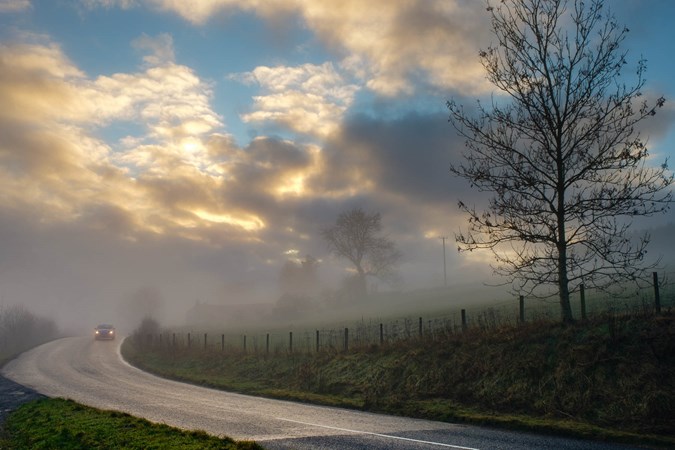
As the afternoon wore on, and the charms of sitting in the passenger seat of the Eclipse wore off with five hours still to go to Birmingham, we paused to admire low clouds and mist; Newcastleton just a couple of miles away. When we reached the small town near Northumberland, the petrol station turned out to be a self-serve type, community funded and reasonably priced.
There’s also an electric charging point, which makes a great deal of sense for cars like the Nissan Leaf or Renault Zoe, which would easily handle the 20-mile trips to supermarkets without emissions in a way that conventional cars can’t.
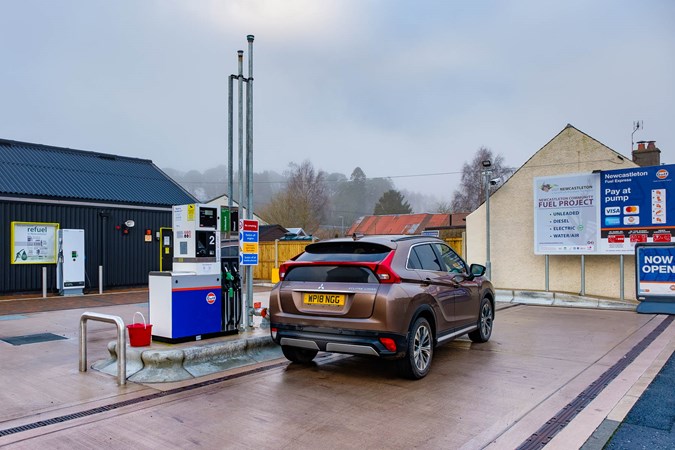
Giving the Eclipse Cross some more challenging roads, more occupants and a fair amount of hill-climbing did hit the economy quite hard, with this trip registering 31.7mpg overall. A lot of that is ironically down to the slow progress through the B6399 from Hawick to Canonbie, where many turns, climbs, stops to look at scenery and a general need to keep varying speed keep the CVT gearbox away from that happy optimal gearing. You could do better but progress would feel glacial, or you could go faster and have very unhappy passengers; it’s all a compromise – much like the car itself.
Once back on the motorways and heading up the A42, or along the M6 and A14, fuel economy returns to normal. As, sadly, does the scenery…
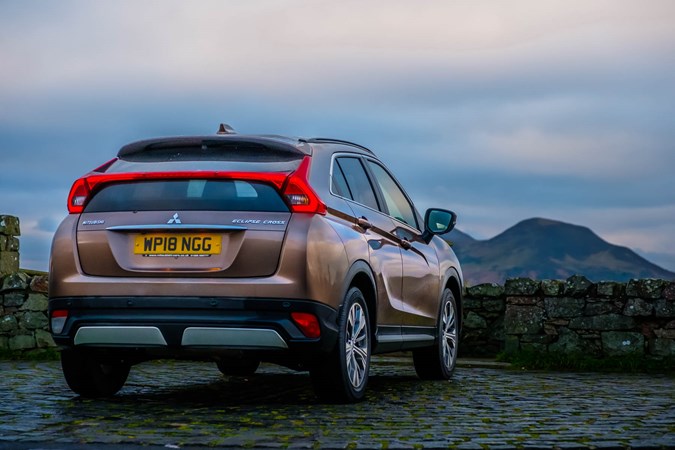
Update 11: Sheep – the Parkers team take the long-term review fleet to Wales, and the Eclipse Cross goes (slightly) off road
China may have visited the Dark Side of the Moon as this update is penned, but we’re getting aquainted with some Animals – specifically, heading away from the concrete jungle of Birmingham towards the beautiful scenery of Snowdonia and the thousands of sheep that decorate the lush green hillsides.
Having lived on a farm for a few years before the city, seeing so much green and little woolly clouds on legs is deeply calming, and the Eclipse Cross’s high driving position helps immensely as the A5 is left behind for the road to Bala and then Porthmadog.
Stopping in Bala for a vegetarian breakfast, there’s a small disappointment. Despite the sign claiming “Goat Hotel”, there were no goats to be seen. In their defence, it’s out of season, so perhaps they cater for a variety of species in winter months.
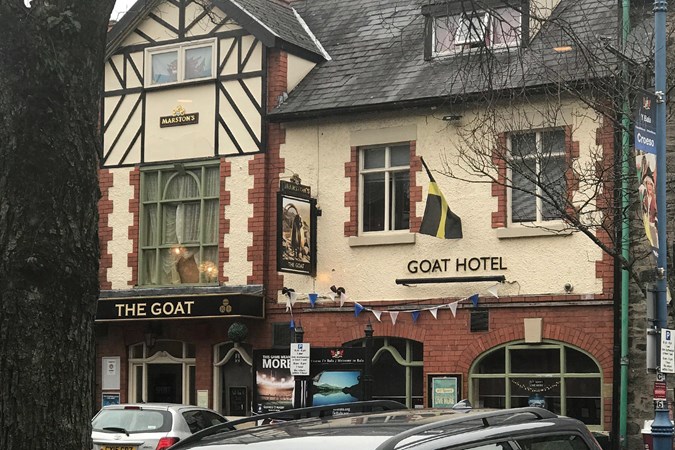
Small disappointments are soon eradicated by the discovery of Bala’s oldest established cafe, Y Cyfnod, which serves a lot of local produce on the tempting menu but most of all has the perfect phrase: ‘vegetarian all-day breakfast’. If you’re enjoying a drive out on these roads, between this and the drive-through farm shop Keith WR Jones spotted, you’re well catered for with options to avoid the usual motorway fayre.
Literally.

Refueled, it’s back out towards the less densely-populated areas of Wales.
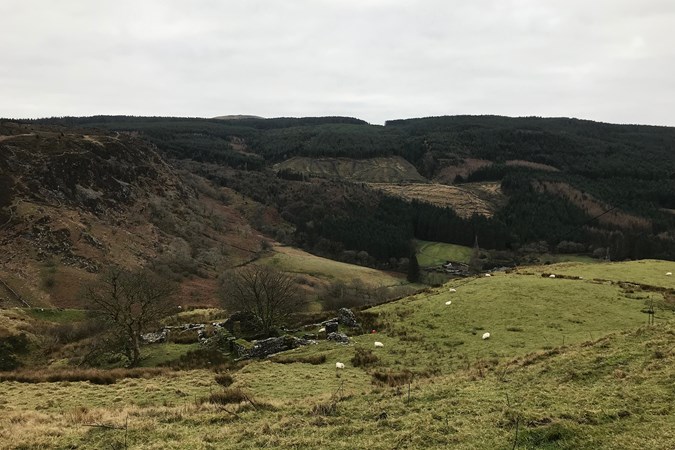
It doesn’t take long before a valley, with a ruined stone building and some happy little sheep complete the Bob Ross idyllic landscapes we’ve chosen as our backdrop. To recreate this, just add some yellow ochre, titanium white, and a dash of dark siena and sap green to your palette. Take a little roll of oil on the edge of your knife and put those happy little trees wherever you feel. It’s your landscape.
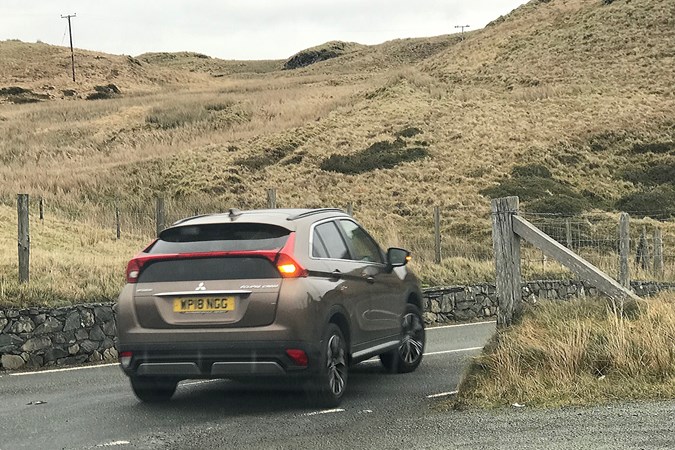
There’s nothing quite as odd as seeing other people drive your car. On the one hand, it gives an opportunity to judge how cool (or daft) you look on the road; on the other hand… it’s your car. Going away without you in it. Like having your grumpy, antisocial cat who only likes you suddenly sit on a visitor’s lap with a look of smug contentment.
When following the Mitsubishi, it was apparent that the impression of bodyroll from behind the wheel is somewhat exaggerated. With my colleagues at the wheel, cornering looked composed and precise.
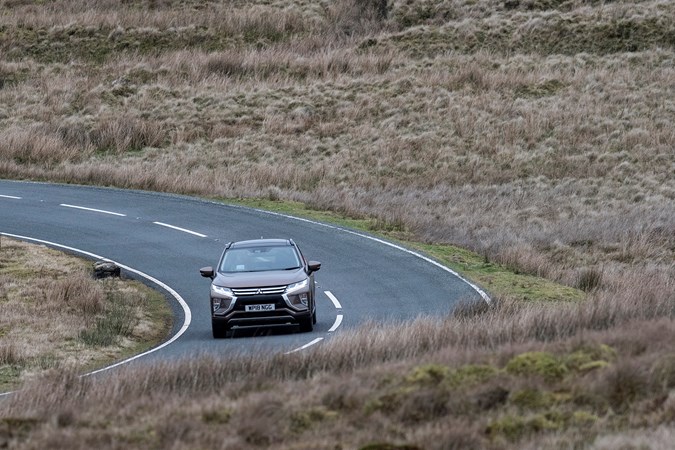
Mostly.
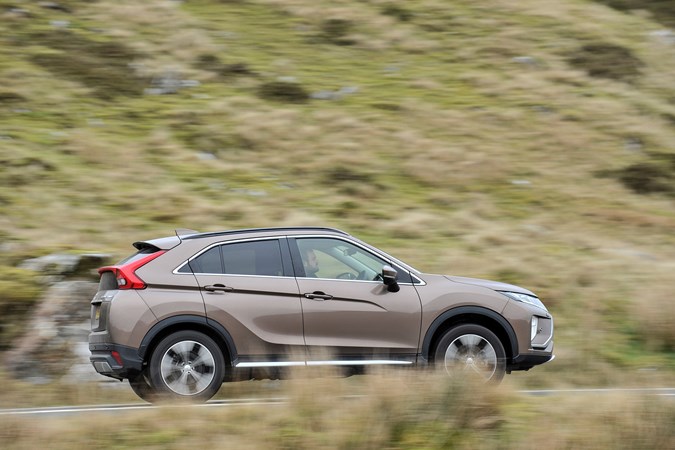
In this landscape, the New Bronze paintwork and dynamic lines of the body work really well together. On these roads, however, the gearbox and engine aren’t quite as well matched, the CVT often holding the engine back, and fuel economy suffers with lots of variation in speed, perhaps more than it would with a traditional 2.0-litre petrol and geared automatic or manual. Suffers, but doesn’t reach the abysmal levels of off-roaders of old; even with this challenging process of different drivers, no real cruising stretch and uphill work the Eclipse Cross returns over 28mpg.
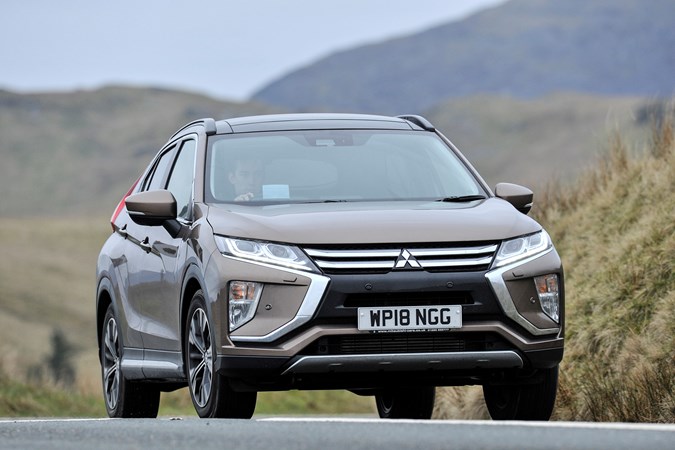
Although I wouldn’t chose a crossover like this for the driving dynamics – or, necessarily, to enjoy a good Welsh B-road – it works incredibly well as a compromise between family car, comfortable SUV, sporty all-wheel drive hatchback and capable off-roader.
Features like the head up display and reasonably thin pillars combined with large door mirrors really help visbility, too, making it easy to enjoy the landscape and place the car confidently on the road. Unlike the ca that had the best chassis for this tarmac, the BMW M140i, which feels like peering out of swimming goggles by comparison.
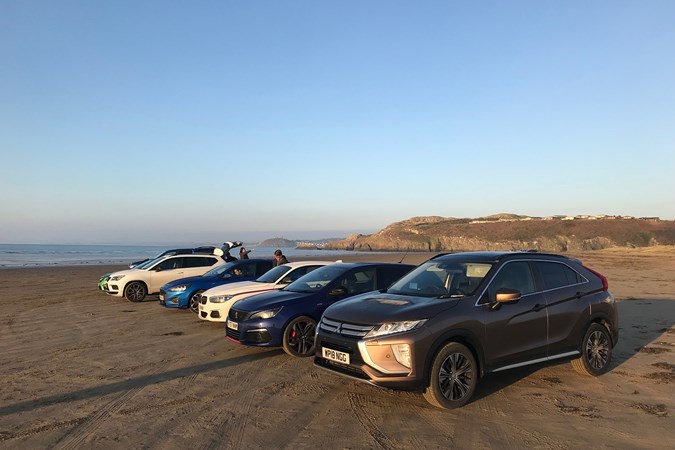
Once on the beach at Porthmadog, the Eclipse Cross is in its element. The S-AWC system certainly adds confidence, even if it’s pretty obvious all the cars were fine on this popular seaside destination, even the rear-wheel drive BMW. While there, we saw more than the average number of Citroen C-Crossers for some reason – clearly Mitsubishi’s GS platform has won fans in Wales, and a handful of Eclipse Crosses were seen on the drive up.
Where the Mitsubishi could venture safely without being followed was the less tightly packed sand close to the dunes. There, the four-wheel drive system and smooth CVT transmission allowed controlled, slow movements rather than digging into the unstable surface.
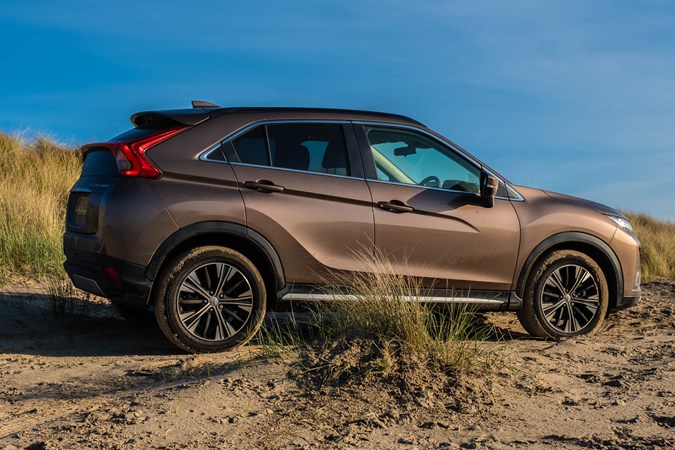
That paintwork and the complex-surface styling looks really good in this environment, complementing the sand and blue skies well.
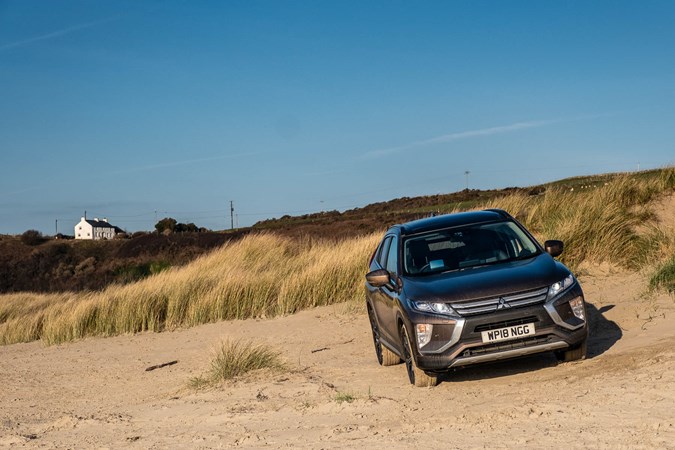
Comparing such a diverse group of cars, particularly when they’re of such disparate values, is always going to be an exercise in futility. It’s even harder in 2019, as consumer expectations, technology, legislation and just the inevitable march of progress mean that it’s incredibly difficult to get a bad car.
Given such a diverse set of roads, though, there’s no doubt that the Eclipse Cross is impressively versatile for what is, to my mind, a genre of compromises and value.
What do the rest of the Parkers team make of the Mitsubishi Eclipse Cross?
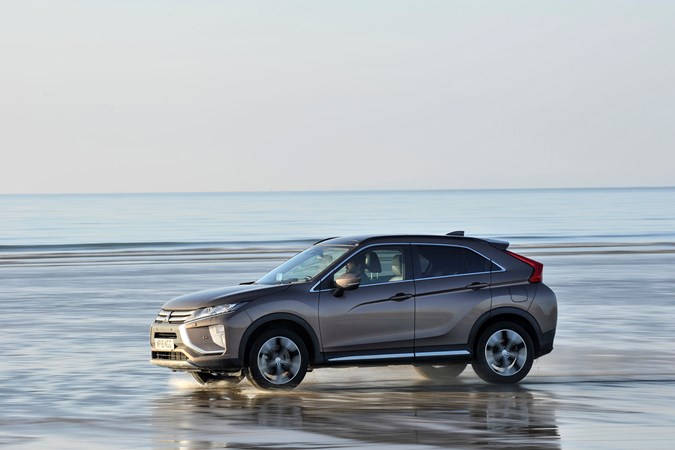
Keith Adams, Editor
‘Having undertaken a couple of reasonably long-haul trips in the Eclipse Cross, I can safely say it’s a bit of a grower. Initial thoughts were that the adaptive cruise control was dire (over responsive), and the throttle response was lazy (exaggerated by the transmission’s gloopiness).
But you get used to this – and soon realise that it’s quick and reasonably responsive – as well as more than acceptably economical. It’s one of those cars that most people will overlook in favour of more obvious rivals, but that’s a shame, as it’s a perfectly capable and very likeable small SUV.’
Gareth Evans, Associate Editor
‘My over-riding impressions of the Eclipse Cross come from an unashamedly enthusiastic blast in Wales, so I’m not in a great position to comment on its comfort or long-distance cruising capability. However, what I can say is that I thought the Brown Car’s handling was among the best in this size of SUV’s class, with exceptional body control (with a little too much lean if I’m being particularly pedantic), supportive seats, and lifeless but direct and pin-sharp steering.
The engine’s hamstrung by the elaborately elastic CVT, however: you really have to drive around its lackadaisical character using the paddleshifters in manual mode if you want to get a move on.’
James Dennison, Video Manager
‘Like Gareth, my drive in the Eclipse was done at a brisk pace with only a small amount of time to get used to the vehicle. Happily, it’s one of those cars you can get straight in and simply drive away. Very little faffing about with seating position, complicated drive modes or anything else along those lines was needed. Excellent. Aside from the CVT gearbox (why do manufacturers still persist with this technology) the Eclipse felt relatively nimble and placeable on the road, with no crashy ride caused by oversized wheels. The seats, too, provided excellent comfort.’
Christofer Lloyd, Finance Editor
‘Smooth enough, fast enough, steering direct enough. Feels cheap but engineered well enough. Lots of wind noise. Odd package – not a very appealing package, but nothing wrong with it in terms of how it drives. Adequate.’
Lawrence Cheung, Web Content Editor
‘Take one look at the Eclipse Cross and you’d think, ‘I think I’ll take it easy on this Welsh road, I’ll just cruise along at 35mph and enjoy that earth-shaking sound system.’
But it’s not something that falls over at the first steer into a bend. Yes, how fun this car is on a welsh mountain road is largely irrelevant for a family car – especially when you don’t want your passengers to be sick on those leather seats – but this Mitsubishi can be hustled along at quite a pace. The brakes are strong and the pedal inspires confidence, which is reassuring for a big-bodied car. The CVT picks up quite well from stationary so it makes a great town car.
Sitting in the rear seats as a passenger was equally pleasant, with a slightly raised seating position over those sat in front and decent support from the seat base. There’s enough legroom in here for adults and looking out the slightly-odd rear window is entertaining, especially when someone’s drawn smiley faces on the dirt…’
Update 12: Don’t Leave Me Now – time to wave goodbye to the Mitsubishi Eclipse Cross 4
When we started on this journey in the baking hot summer of 2018, and with no offence to Mitsubishi overall (I’ve owned several, after all, and know its track record of innovation well), the Eclipse Cross was almost the last car I’d have chosen for myself. It belongs to a genre of bloated, needlessly tall cars – crossovers, and it’s a crossover with reduced practicality due to the sporty cut of the roof; there’s a smallish engine, and certainly seems to be marketed heavily on price, so clearly has to be engineered to undercut rivals, right?
I really couldn’t have been more wrong.
Over 14,000 miles and seven months, it went from an interesting curiosity, to a genuinely likeable car that fit into every situation effortlessly. When moving house, the seats folded to create enough room to carry far more than the lowish roof implies, the refinement on long journeys is remarkable for such an affordable car.
Contrary to many reviewers, I found the CVT gearbox and 1.5-litre turbo engine to work incredibly well together, once I’d adapted by driving style to suit – and without hanging around, achieved resonable economy for the performance, usually hovering around 34mpg vs the official 40.4mph WLTP figures will probably reduce the official score, too.
Amazingly the weather remained kind, so opportunities to drive in snow didn’t materialise, but there’s no reason to doubt that it would be as surefooted as any rival.
Mitsubish Eclipse Cross long-term verdict
If you’re still in doubt then let’s be clear – the Eclipse Cross deserves your consideration, and I personally like it a great deal. It’s comfortable, affordable to run for an all-wheel drive automatic, capable and looks distinctive. Long journeys show how well designed the seats and controls are, and it’s got enough steering feel to be fun to drive despite the tall body and soft ride.
It competes in a very tough market, and I prefer it to the similarly-priced competitors I’ve driven from Volkswagen, Skoda, Nissan and Mazda. Refinement over a similarly-price T-Roc is tangible, for example, and there’s more useful kit.
It’s a tougher call on finance, as this is generally an expensive genre and specification to go for – smaller crossovers like this make more sense in basic specifications, where the Eclipse Cross advantages are even stronger; in manual front-wheel drive form there’s a lot of the charm still intact.
It’s got character, and character goes a long way.
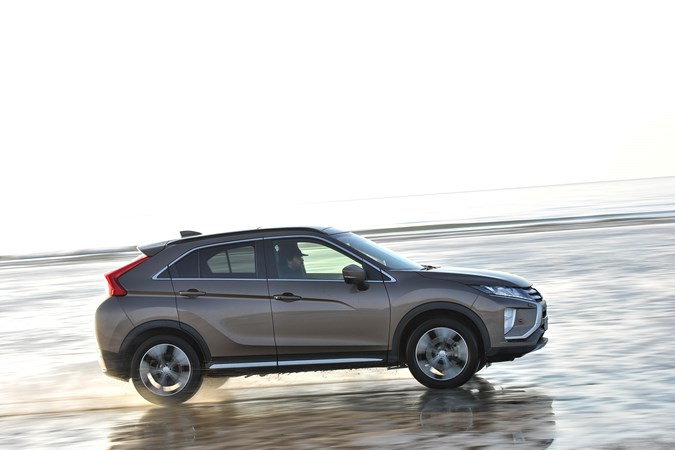
by Richard Kilpatrick
| Latest Mitsubishi Eclipse Cross 1.5 Auto 4x4 running costs | |
| Current mileage | 14,387 |
| Real-world average fuel economy | 33.8mpg, 84% of official |
| Official combined fuel economy | 40.4mpg |
| Joined Parkers fleet | 1 June 2018 |
